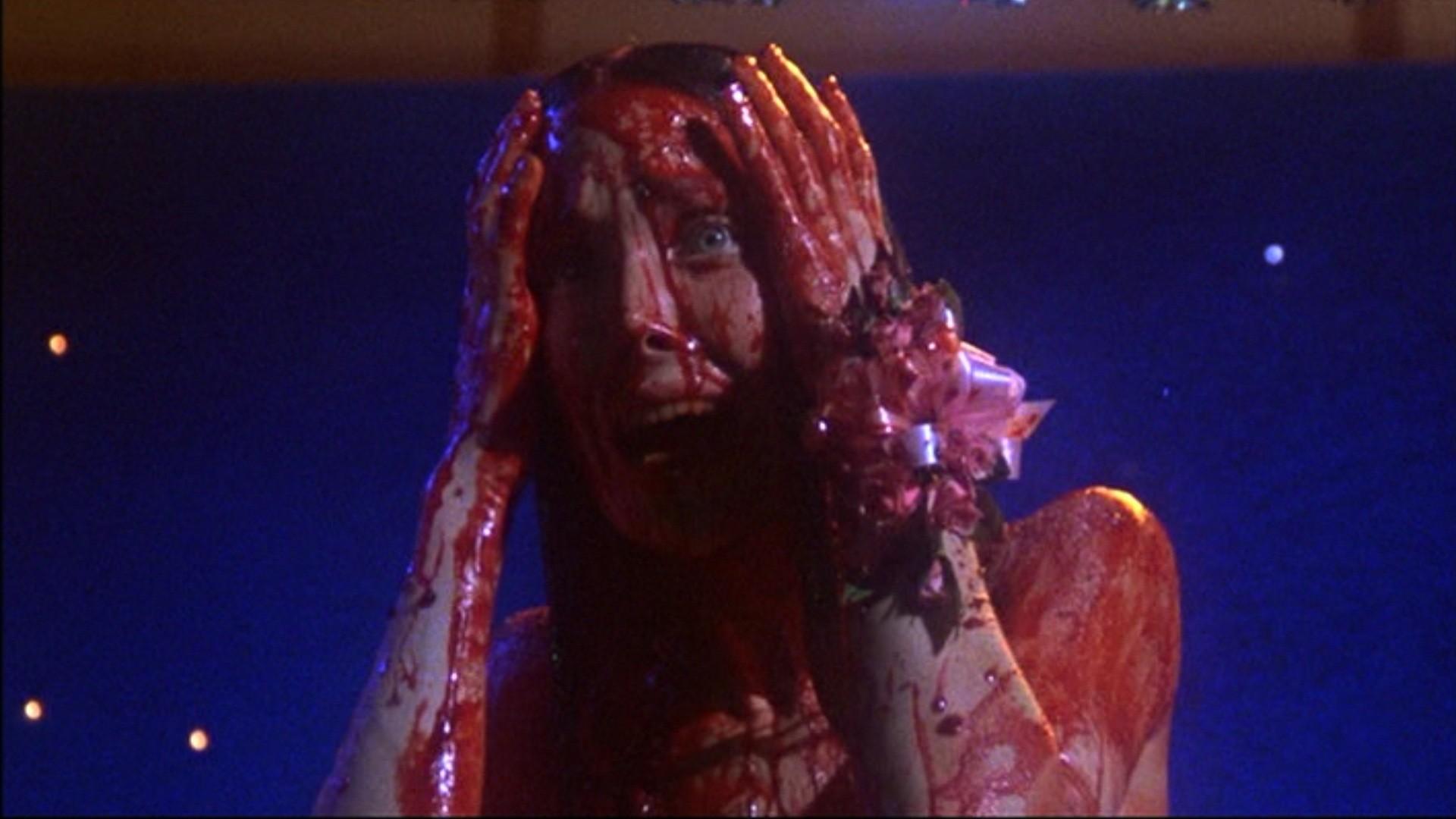Pop Culture Fix: Diablo Cody Better Not Be Joking About a “Jennifer’s Body” Sequel!
Diablo Cody Teases a Jennifer’s Body Sequel

Just the very idea of a Jennifer’s Body sequel has me foaming at the mouth.
I only had one foot out of the closet door when Jennifer’s Body came out, and in 2009 it was cool to hate Megan Fox for no reason, so I had to pretend I didn’t feel Some Type of Way about the Jennifer/Needy relationship. But I watched it again last year, as a gay adult with my gay adult friends, and I was able to fully enjoy this cult classic for the masterpiece it is. Not only is it pure camp (name more iconic dialogue than: “You’re killing people,” “No, I’m killing boys”) but it also really taps into the experience of teen girls (and/or people who thought they were or were perceived as teen girls.) I could write an entire thesis on this movie but I won’t, instead I will say this: we are in an era of remakes, and I don’t want that. The first movie is perfect just the way it is, it (perhaps sadly) doesn’t need to be modernized in theme, just maybe in some select language.
But a sequel, a follow-up, a similar movie from the same creators? Yes, please. It’s like how in Scream sequels, it’s the same thing happening to different people with different twists, but the same general lore and vibe. THAT is a movie I want to see. And this time, it can be even gayer.
But Wait, There’s More (Pop Culture News)
+ The MCU lost Ayo Edebiri for their upcoming project Thunderbolts, which is sad for us since we now won’t get Ayo + Florence Pugh banter. She is being replaced by Geraldine Viswanathan, someone who has previously played queer but does not seem to have any proof of queerness on the very surface of the internet where I briefly checked
+ Ella Hunt will play SNL alum Gilda Radner in upcoming movie
+ In case you went to a cabin in the woods this weekend and missed it, there’s some Nicki Minaj/Megan Thee Stallion feud going on
+ People are not loving Miller’s Girl, which I only tell you because it’s possible Gideon Adlan plays queer in this movie and may or may not kiss Jenna Ortega? This is a rumor that TikTok started, anyway. In one review Adlan’s character was referred to as a “provocatively dressed lesbian” but in that same sentence describes her as throwing herself at a man so everything is unclear at this time.
+ Mean Girls is still doing pretty well at the box office
+ Ice Spice and Victoria Monét, among others, are going to be honored at the Billboard Women in Music Awards
+ Avatar: The Last Airbender, The Morning Show, and more will be at Paleyfest
+ If you heard Reneé Rapp mention the Lesbian Masterdoc and you weren’t a tumblr gay, you may have had questions, look no further (You didn’t think I’d make it through an entire Pop Culture Fix without mentioning Miss Rapp did you?)
+ Ashley Benson is pregnant…I feel like there’s a sex bench joke in there but I’ll let it slide out of respect for the mother-to-be
Stunt Queens: The History and Cultural Significance of the “Queerleader” in Film and Television
Gays, let’s rally! I’m here, queer, and ready to dive real deep into a very important dyke media legacy: queer cheerleaders on screen.
I made a list of all the pom-pommed lesbian and bisexual moments from film and television I could think of off the top of my head, which it was already very long! I then researched further and uncovered even more. The Queerleader has long been an image used to both subvert and reinforce notions of girlhood and femininity. As with many tropes and stocktypes when it comes to queer images and stories in film and TV, the Queerleader is complicated: sometimes a powerful image of femme lesbianism and other times intentionally portrayed as disruptive and dangerous, a threat to not only men but the women in close proximity to her.
Before we get into the timeline, let’s start with the roots of the Queerleader’s legacy.
What makes the sport and spectacle of cheerleading a realm so rife with lesbian and bisexual activity? Well, I think the answer is as simple — and as complex when you really drill into it! — as the answer to why settings/contexts such as all-girl’s schools, convents, and sororities are also frequent playgrounds for queerness and sexual exploration. These are, conventionally, highly feminized spaces considered to be largely free of men. And that’s where things also get complicated, because such spaces are often fetishized by straight cis men for that exact reason. It is a place where they are forbidden, and therefore it’s a place where they cast their voyeuristic gaze, peering as if through a peephole. You might not be surprised that when researching this specific topic, I also encountered a lot of cheerleader-themed lesbian porn.
But I think it’d be overly simplistic — prudish, even — to suggest the Queerleader and the homoeroticization of these other “feminine” spaces exist solely for the male gaze. It’d be a stretch to suggest straight men invented the Queerleader, even if the earliest examples of these filmic depictions were indeed constructed by men. While those might compose the majority of our pre-1999 examples, I think that has more to do with who had the means and power to make movies. There are lots of early- to mid-twentieth century examples of women writing lesbian narratives set in some of the aforementioned women’s spaces, including 1917’s Regiment of Women by Clemence Dane, set at an all-girls school. Radclyffe Hall drew from her friend Toupie Lowther’s experiences in a French World War I women’s unit for her famous novel The Well of Loneliness (1928). Prolific lesbian pulp novelist Ann Bannon realized her own sexuality while in a sorority in college and then went on to write Odd Girl Out (1957) about two sorority sisters in a relationship.
Sure, these are examples from literature, but in the early- and mid- 20th century, literature was a more accessible artform than film/television for women and queer people, especially because pen names allowed them to write somewhat anonymously and ambiguously. But on the cinematic side of things, Dorothy Arzner arguably invented the all-girls school film with The Wild Party in 1929, and while the movie features pre-Code compulsory heterosexuality, its lesbian erotics are impossible to miss.
So, cheerleading does seem to fit into this concept of “women’s spaces,” which make for ideal settings for lesbian narratives — especially in decades when homosexuality was widely criminalized and stigmatized — by allowing women to be in close proximity to each other. These are worlds in which women touching and being physically close can be seen as normal and even expected and not strictly forbidden or policed.
But when it comes to the Queerleader, I do think the reoccurrence of this image goes beyond cheerleading being a largely women-dominated sphere. At the risk of starting to sound like an academic paper (or perhaps that line has already been crossed lol), I argue that the cheerleader is an ideal symbol to inject with or project upon queerness due to the dichotomies cheerleaders have long culturally represented. In Go! Fight! Win!: Cheerleading in American Culture, Mary Ellen Hanson digs into these contradictions embodied by cheerleaders:
The cheerleader is an icon, an instantly recognized symbol of youthful prestige, wholesome attractiveness, peer leadership, and popularity. Equally recognized is the cheerleader as a symbol of mindless enthusiasm, shallow boosterism, objectified sexuality, and promiscuous availability. (Hanson, 2)
Indeed, cheerleaders are largely considered the most popular girls at school while simultaneously dismissed as vapid, empty-headed dolls. They’re portrayed as Good Girls who cheer on the boys but they’re also portrayed as scantily clad seductresses. Their femininity is a weapon and a beacon.
I’ll never forget the time a friend rudely dismissed another woman I barely knew and, when I asked why she’d done so, she simply said “she was a cheerleader in high school.” This ex-friend was parroting very common (and boring!) assumptions about cheerleaders that have been around for forever. She sounded not unlike this snide 1974 Esquire article about ex-cheerleaders, but it was 2014. (That Esquire article replicates additional persistent cultural expectations of cheerleaders, including that they be white, blonde, and have an ass in a manner that could read as tongue-in-cheek but is most certainly not.)
Do these dichotomies and paradoxes not sound familiar? Are they not evocative of the ways lesbians are also culturally regarded and portrayed throughout history? Simultaneously sexless and hypersexual. Queering the cheerleader becomes a way to both challenge and reify these dual narratives. Homophobic iterations of the Queerleader see her as a predator and an affront to the feminine ideal cheerleaders are meant to symbolize. But positive and queer-created iterations of the same character ultimately capitalize and play on the same assumptions and cultural symbols. The most successful and compelling ones just do so in a way that confronts those ideas rather than merely replicating them.
When I started writing this piece several months ago, I mostly meant for it to be, well, horny. Horny, funny, and detailed — my sweet spot! Now this final iteration has, like, lite citation work???? But listen I, not unlike a Queerleader, can be many things at once. Please let me live my best erotic-meets-scholarly life. Reference work can be horny, too!!! I’m engaged to a librarian after all.
And with all that context, here’s my painstaking timeline of the Queerleader in film and television.
This post was originally written in January 2023 and updated/republished in September 2023.
1970s: The Sexploitation of Lesbian Cheerleaders

I tried very hard to find some readily available pre-Code films that 1. featured cheerleaders in a significant role and 2. had enough legible lesbian subtext to warrant a place in this timeline, but this proved difficult! Once I researched the actual history of cheerleading itself, the reason became clear.
Cheerleading has not always been a women-dominated sport. In fact, it was mostly for men prior to WWII. This makes sense, as cheerleading started at the college level in conjunction with intercollegiate sports. In the late 1800s and early 1900s, male volunteers would lead cheers to encourage spectator involvement during sporting events (Hanson, 11).
Stunts and jumps started becoming more popular in the 50s, and then the 70s saw the introduction of Title IX, which expanded athletic opportunities and funding for women’s sports. Cheerleading increasingly became more athletic and less about just shouting from the sidelines as a result. So, that’s your little mini history lesson on cheerleading and likely the reason why we don’t see a lot of filmic representations of women cheerleading in the pre-Code or Hays Code eras of Hollywood.
The first real instances I found of cheerleaders engaging in lesbian activity were the aforementioned 70s sexploitation movies in which hookups between women are used mostly as non-sequitur titillations. The Cheerleaders (1973) — in which high school cheerleaders decide to sleep with the rival team’s players so that they’ll be too tired to play well — and the absurdly titled The Great American Girl Robbery (1979), about a bus of cheerleaders taken hostage, were the most overt examples of these.
As that aforementioned Esquire article published in 1974 shows, the idea of the cheerleader as a sex symbol was already firmly in place during this decade, and it’s not at all shocking that we see Queerleaders cropping up in these soft core movies. I cannot in good conscience recommend these two particular films, but the lesbian sex scene in The Cheerleaders that prominently features an exercise bike is…very memorable! If you’ve seen any 70s-era titty movies, there’s nothing here that will shock you too much.
But I’m a Cheerleader (1999)

Jamie Babbit’s satirical teen film starring Natasha Lyonne and Clea DuVall as friends-turned-lovers at a gay conversion camp is easily the most iconic entry on this list — and arguably the prototypical Queerleader Movie even if technically some depictions do predate it. But given that Babbit is queer herself, this feels like the true beginning.
In an interview in 2005, Babbit had this to say about the decision to make the lead character a cheerleader:
Well, the reason we wanted to have the lead character be a cheerleader is because, for us, it was sort of the pinnacle of the American dream, and the American dream of femininity.
Babbit utilizes and flips the same image and assumptions those 1970s sexploitation movies with Queerleaders also put forth — but in a way that’s distinctly queer and subversive. Those 70s movies assume that a cheerleader engaging in lesbian sex is inherently horny (and mainly for straight men) because it seems forbidden and wrong in the context of the All-American Good Girl the cheerleader has come to represent. Cheerleaders exist, by the definition adopted by those movies, to root for and devote themselves to men and men’s accomplishments. To see them having sex with each other (even with the secret presence of a male voyeur, as those 70s scenes tend to involve) is at odds with that. With But I’m a Cheerleader, the primary intent is not necessarily titilation, but there’s something similarly fraught in how Megan’s queerness is considered at odds with her identity as a cheerleader. Even its tongue-in-cheek title nods to this: She can’t be gay because she’s a cheerleader. Only here, Babbit is indeed making fun of such a silly declaration, challenging not only the dominant narrative of how queer women look and act but also of how cheerleaders act, too.
The movie is not just one of the best and earliest Queerleader texts but also one of the greatest lesbian films of all time; in fact, it’s in the number one spot on our list of the 200 best lesbian, bisexual, and queer films.
Bring It On (2000)

This movie is the only one in this timeline that employs lesbian subtext rather than explicitly queer content, but it’d be silly to ignore Bring It On‘s ongoing popularity in the dyke community, especially since a lot of us who are over 30 and often clung to movies in our younger years that were not necessarily loudly queer but had an implied lesbian undercurrent to them (because some of us ourselves were not necessarily loudly queer but had an implied lesbian undercurrent to, like, every movement we made). Bring It On might not be an official Queerleader text, but it is almost too easy to project a Queerleader narrative onto it.
Bring It On, a very good movie, also inspired an entire multiverse of very bad straight-to-video/made-for-TV movies, and you’ll read a little more about that further down the timeline.
Veronica Mars, “Versatile Toppings” (2006) / Heroes, “Hysterical Blindness” (2009)

Season two of Veronica Mars gave us gay cheerleading activity in the episode “Versatile Toppings,” which is, unfortunately, a reference to pizza and not to lesbian tops. The episode feels like a 2006 pop culture time capsule in that it stars Kristin Cavallari of Laguna Beach fame as a closeted cheerleader. There’s also some throwback high school homophobia on display, with Madison Sinclair taunting another closeted character, Marlena, for looking like an Indigo Girl? Anyway, while lesbian cheerleading isn’t exactly a main throughline of this show or even this episode, I’m interested in how the Queerleader trope’s appeal and ubiquity makes it so that it even shows up in small moments like this. We see another quasi-instance of this in the fourth season of Heroes, which manages to combine Queerleader and Sapphic sorority shenanigans. Sure, Claire is no longer a practicing cheerleader at this point, but her college roommate’s obsessive crush on her does seem to hinge on a romanticization of the All-American girl aesthetics that Claire gives off. I’m counting it!
Degrassi: The Next Generation (2006)
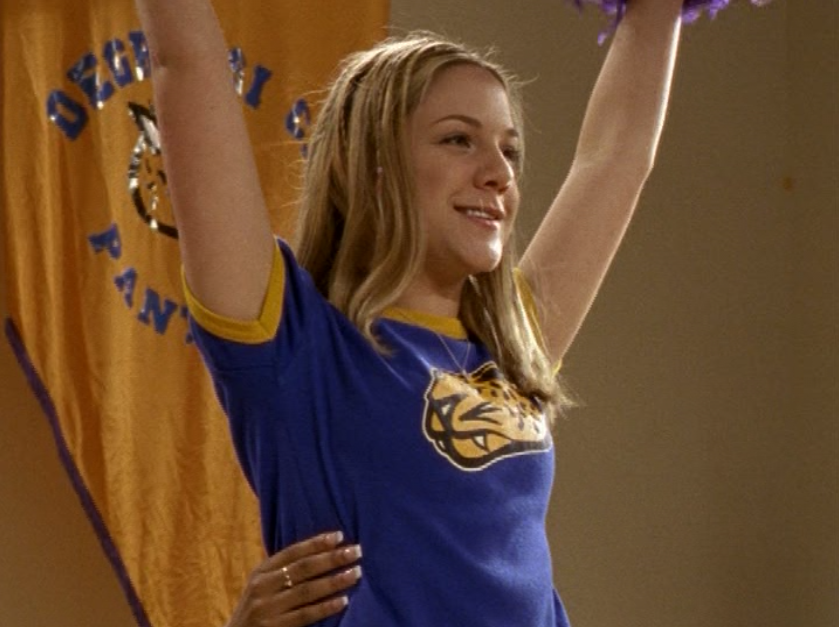
Paige Michalchuk (Lauren Collins) is arguably television’s prototypical Queerleader. She first comes to terms with her bisexuality in season five, beginning a relationship with Alex Nuñez (Deanna Casaluce) in “The Lexicon of Love (2).” They have a classic enemies-to-lovers + opposites attract trope trajectory: Paige is the school’s Queen Bee and a popular cheerleader, while Alex is considered a “bad girl” from “the wrong side of the tracks.” They both have more layers to them than these stocktype categories suggest. It’s easy to interpret Paige’s attraction to Alex as directly connected to the fact that she’s different than the other girls Paige tends to associate with. A quick tumblr search reveals their ship portmanteau “Palex” is still popular to this day, and I found a few different fanfics that explicitly make use of Paige’s cheerleading uniform to erotic effect.
It’s quite easy to draw a line from Paige to Glee‘s Santana Lopez.
Across the Universe (2007)

The chokehold this Beatles-themed musical movie had on me when I was 15 and in performing arts school? Impossible to overstate. Though I was too closeted at the time to admit it, a big component of this obsession was the movie’s recontextualization of the song “I Want To Hold Your Hand” to be about a closeted cheerleader’s queer longing. Prudence holds it down for all the small-town Midwestern queerleaders out there. Played by Chinese American actress T.V. Carpio, she also stands out on this list, which incidentally tracks how a lot of on-screen portrayals of cheerleading default to whiteness. After all, queerleaders are known for being many things at once, and oftentimes characters of color are not allowed to be as complex and contradiction-laden as their white counterparts.
Jennifer’s Body (2009)

Underrated — and even maligned — at the time of its release and now accepted and celebrated as a classic after many years of cultural writing that has reconsidered and reframed the conversation around it, Jennifer’s Body is one of the best bisexual horror movies ever made. It was, by my memory, the first time I saw two women kiss on the big screen.
But even before that, Jennifer’s Body stirred within me some sort of feral animal force. It wasn’t the jumpscares or the body horror that got me; the thing that made me want to shut my eyes was the sexual tension between Needy (Amanda Seyfried) and her best friend Jennifer (Megan Fox). It was too much for my closeted self to bear. In their first scene together, Needy watches Jennifer do a routine in her cheerleading uniform — in slow motion — in the high school gym. Perhaps the slow motion is intended for the viewer’s own voyeurism, but my reading is that this is Needy’s perspective; she sees Jennifer’s body (*Beanie Feldstein voice* it’s the TITULAR ROLE) in aching, softened, sexy motion, so that’s what we see, too. She watches so closely, so intently, and with such unfiltered desire registering in her gaze that another student actually leans forward and says “you’re totally lesbi-gay.” To me, this entire moment is far more erotic than their eventual make out.
This is less a movie about cheerleading and more a movie about Jennifer turning into a flesh-eating succubus, but given that opening scene’s slowed-down, cheer uniform-clad, “lesbi-gay” iconic visuals, it’s an important film in this timeline. Jennifer’s status as a popular cheerleader is a big part of why she’s able to get close to men and subsequently kill them. She threatens natural social order at their school not because she’s maybe in love with her best friend but because she’s… a literal demon.
Fired Up! (2009)

Do I regret the hour and a half I spent watching this movie? Mostly! Was it perhaps worth it for the scene where all of the attendees of a cheer camp recite lines verbatim in unison while watching Bring It On? NOT QUITE. Fired Up! is about two football dudes who decide to go to cheerleading camp in order to up their body counts, so perhaps you will not be surprised to learn that the humor here is of the crude, bro-y sort.
The only Queerleader in this movie is a textbook example of a predatory lesbian, and I almost didn’t include it in this timeline for that reason. But I ended up wanting this exploration to feel really comprehensive and layered, and that means including the bad shit, too.
There’s a running gag in the movie that one of the airhead cheerleaders doesn’t realize the Queerleader is aggressively hitting on her. Fired Up! positions the Queerleader as an impure perversion of the cheerleader, as a stark deviation from what Fired Up! believes cheerleaders should represent. In a way, there’s even a parallel between her and the straight dude protagonists, whose proximity to cheerleading is predicated on them just wanting to have access to cheerleaders and their bodies. Only, the guys get to be the goofy and ultimately redeemable protagonists, while she remains a bit character we’re meant to think is gross.
Fired Up! came out when I was in high school, and I don’t think I saw it at the time, but this was an image of lesbianism I was very familiar with, and it’s actually this sort of casual representation of the lesbian as inherently creepy and aggressive within feminine spaces that did way more psychic damage on me than any overt examples of the lesbian as a villain or even as a killer. Remember how I wanted to shut my eyes during the opening cheerleading scene of Jennifer’s Body? It was exactly because of this; because I felt like a creep for looking at her the way Needy does.
Fun Fact: There’s a blooper reel during the credits, and in it Juliette Goglia’s Poppy — who is one of the main guy’s little sisters — actually says the word Queerleader during a runner of various alternative punchlines. It’s absolutely meant as an insult in this context, but again, I’m looking at alllllll filmic representations of this topic, baby! The good, the bad, and the ugly!
Glee (2009)

Ah, yes, if Across the Universe had a chokehold on me when I was a musical theater student in high school, well, Glee tightened that grip even more. Though about a glee club first and foremost and only sometimes about cheerleading by way of its central villain Sue Sylvester (Jane Lynch, unfortunately not playing a queerleading coach), the image that comes to mind most readily and potently when I think of Glee is this: two girls in cheerleading uniforms, holding pinkies.
Santana Lopez (Naya Rivera) and Brittany Pierce (Heather Morris) were formative queerleaders for me — and arguably they are THE Queerleaders in this timeline. The first time we ever see them kissing, they’re in bed together in their cheerleading uniforms. Those uniforms are inextricable from these characters. Brittany’s bisexuality isn’t really a source of conflict, and Santana’s whole thing is that on the surface she’s the prototypical Mean Girl trope but then there’s so much more to her. Indeed, she’s mean to just about everyone except Brittany. And they go from high school sweethearts to wives!
Fun Fact: One of the gayest things I ever did when still identifying adamantly as straight was when I wrote an “article” for a “pop culture zine” on my college campus about the merits and nuances of Santana Lopez’s coming out arc on Glee.
Hellcats (2010)

This series about college cheerleaders only ran on the CW for one season and is nearly impossible to stream these days. But during that brief run, Elena Esovolova played Patty “The Wedge” Wedgerman, an out lesbian on the squad. However, Patty only appeared in five episodes and never really got a fully fleshed out storyline. Despite having a lesbian character, there are no lesbian relationships in the series, and if anything the gayest parts actually seem to be the subtext between the show’s main characters Marti (Aly Michalka) and Savannah (Ashley Tisdale).
Apparently during a press tour in 2011, Michalka noted that Patty had been dropped from the narrative because the writers “found that it was really hard to involve her with the Hellcats and dividing all the story lines.” While supposedly Michalka noted this had nothing to do with Patty being a lesbian………….I’m not convinced. It sounds to me like another instance of the Queerleader rendered an “outsider,” and instead of that becoming a meaningful and potentially even powerful image dismantling ingrained images, it becomes an inconvenience for the writers. I genuinely enjoy lesbian subtext, but if you’re only willing to go there and not into more explicit queerness WHEN THERE IS ALREADY A LESBIAN CHARACTER AROUND, that’s a no for me.
All Cheerleaders Die (2013)

I watched this movie for the first time recently and was quite delighted by it! Is it perfect? No. But it’s fun horror trash with occasionally glimmers of brilliance. All Cheerleaders Die centers on Mäddy (Caitlin Stasey), a girl whose best friend dies during a cheerleading stunt gone wrong. (The found footage-style scene that establishes that death at the beginning of the movie is fantastic; I always love portrayals of cheerleading that acknowledge just how brutal the sport can be, which we’ll get into further down the timeline.) The following year, Mäddy joins the squad, which is very confusing to her recent ex-girlfriend Leena, who btw is a witch.
When an altercation with the football team leads to the cheerleading squad’s deaths, Leena brings them all back from the dead. The catch? They’re basically linked succubus/vampire-like creatures who have to collectively feed on men’s blood to maintain their strength. There’s body-swap shenanigans, body horror, all my favorite things. All the while, Leena seems to get a very kinky pleasure out of basically being in charge of the lives of these cheerleaders. And like a good monster lover, she lets Mäddy feed on her.
A double-feature screening of Jennifer’s Body and this movie would be very fun! I like my Queerleaders to be murderers of men!
Wynonna Earp, “Gonna Getcha Good” (2017)

In season two, episode three of the beloved sci-fi Western series Wynonna Earp, bisexual character Waverly (Dom Provost-Chalkley) dons a cheerleading costume and puts on a seductive routine for her girlfriend Nicole (Katherine Barrell). This show isn’t even a little bit about cheerleading, but this is a very important Queerleader moment in that Waverly is explicitly doing cheerleader roleplay to turn on her girlfriend. The scene directly acknowledges the erotic appeal of cheerleading for lesbians and bisexual women.
“I didn’t know if it was your thing,” Waverly says after she’s done with the cheer. Nicole’s jaw is on the floor. “Baby, that’s everybody’s thing,” she says. Which is basically my entire thesis for this piece in a nutshell.
Riverdale (2017)

Season two of Riverdale saw the official introduction of queer storylines for Cheryl Blossom (Madelaine Petsch), but some of us ahem SCHOLARS were picking up on the gay vibes emanating off of the red-haired and sharp-tongued cheerleader since basically episode one.
Indeed, Riverdale‘s pilot actually features a Queerleader moment — a kiss between Veronica (Camila Mendes) and Betty (Lili Reinhart) during their Vixens tryouts that Cheryl immediately dismisses as pandering and dated: “Faux lesbian kissing hasn’t been taboo since 1994.” But later in the series, Cheryl goes on to co-captain the Vixens with her literal girlfriend, the bisexual icon Toni Topaz (Vanessa Morgan). I strongly believe Cheryl is evidence of Santana Lopez’s lasting Queerleader impact. Here, too, is an on-the-surface Mean Girl stocktype who actually harbors a quiet vulnerability and softness in her, brought out by the fellow Queerleader she falls in love with.
In the final season of Riverdale, the characters are transported back to the 1950s and in high school again. In addition to on-and-off Vixens Betty and Veronica finally becoming canon — recontextualizing that kiss from the pilot — the series ends with Carol and Toni coming out as a couple to their fellow Vixens and a few of the other cheerleaders also coming out in response. Queerleading is inextricably baked into the wild world of Riverdale.
The Babysitter (2017)

Here’s another slight stretch, but I’m nothing if not thorough. Horror-romp The Babysitter‘s only Queerleading-adjacent moment comes when Samara Weaving’s Bee tongues Bella Thorne’s Allison during a game of spin the bottle. Allison is in her cheerleading uniform for the purposefully over-the-top make out sequence, during which Bee puts her gum in Allison’s mouth???? There’s no overt textual evidence of Allison’s bisexuality or queerness in the film — unless you count her very apparent arousal during this extended kiss, WHICH I DO??? Plus, I feel like every Bella Thorne character just radiates Bella’s own bisexuality.
We do see this slow-motion scene unfold from the perspective of an adolescent boy, so I can see how it might be viewed as a continuation of the sort of male fantasy of Queerleaders from back in those 70s movies or in modern-day porn. But the scene is also so long and so exaggerated that it actually feels like its poking fun at the voyeur and quite LITERALLY being tongue-in-cheek.
Dare Me (2019)

Yay, I get to now participate in one of my favorite hobbies: Screaming at people to watch Dare Me.
WATCH DARE ME!
No movie or show has captured the baked-in brutality of cheerleading as a sport as searingly as Dare Me, a slow-burn thriller full of blood, crunched bones, and contorted bodies. It also lives in another hyperspecific subgenre I’m drawn to: stories about toxic mentorship. In this instance, that takes the shape of a really fucked up coach-athlete dynamic. It doesn’t go the ways you think it might. But coach Colette French’s (Willa Fitzgerald) need for total control over the body and mind of Addy Hanlon (Herizen F. Guardiola) and the ways she manipulates the young girl are a true source of horror.
And that violent power dynamic never becomes overtly sexual, because queerness itself isn’t villainized in Dare Me — abuse of power is. Instead, there’s a slow-burn queer romance at the core of the show, sizzling just on the sidelines for much of the series. but ultimately hugely important for character motivation and development. Addy’s co-dependent friendship with bff Beth (Marlo Kelly) is gradually revealed to be something more. The subtext becomes bolder text in measured, scintillating increments rather than some gaudy big reveal, and it feels all the more real for that. And throughout, Dare Me explores just how dangerous and intense cheerleading itself can be, sticking up its middle finger to portrayals of the sport as something cute and fluffy. Femininity in Dare Me has sharp edges and bite.
I recently read the pilot script for Dare Me and was struck by some of the language it uses in its descriptions of actions. It describes the girls putting glitter on their faces as putting on their “cheer masks.” When a character falls, the script notes that this is what cheering really is. Here is a show that understands well the performance, risk, and almost battle-like stakes of cheerleading, which makes its exploration of Queerleading all the juicier.
Knives and Skin (2019)

A surreal psychological thriller that has been described as like if David Lynch made a teen movie without ever really living up to that admittedly alluring interpretation, Knives and Skin is a very strange movie that includes clownfucking, haunting a cappella renditions of pop songs, and strong use of color. For an experimental film, it just doesn’t quite take enough risks and could also have done with a tighter edit.
One of its many teen girl characters (the movie is largely about, among other things, the unbearable sadness threaded through girlhood) is a Queerleader named Laurel (Kayla Carter). Presumably, she’s in the closet or otherwise still figuring out her sexuality. She’s in a highly visible relationship with a boy but a shadow relationship with another girl. Even if they never officially “date,” they find a lot of homoerotic things to do together, including passing handwritten notes to each other that were kept…inside their vaginas.
The Prom (2020)

Ariana DeBose’s closeted Queerleader Alyssa is easily the best part of The Prom, a movie musical I wish I liked more! It is very heartwarming and lovely in moments, but there’s an emptiness to it that makes it almost instantly forgettable. But! Alyssa! Alyssa is a great character, and her relationship with her queerness is different than that of the film’s main character. The stakes are different for her.
Alyssa’s solo in the movie “Alyssa Greene” is all about her mother’s (Kerry Washington) molding of her into a perfect girl. She has to be beautiful and smart (“The hair has to be perfect / The As have to be straight”). She has to be the best at everything she does (“Trophies have to be first place / Ribbons have to be blue”). Cheerleading is one of the many things Alyssa has to ascribe to in order to achieve the level of perfection her mother demands and the level of perfection that ultimately buries her queerness deeper and deeper. It’s a tactic a lot of queer folks employed in our teenage years, myself included: You think there’s something “wrong” with you so you fight like hell to make everyone else see “perfection.” Her cheerleading uniform is like the rest of her life: a costume and an act. Or, maybe, armor to protect herself.
The music video for “Cheerleader” by Sir Babygirl (2020)

Queerleading-themed music videos have become a very specific canon of art, so while they technically fall outside of the realm of movies and television, I have now encountered so many that I feel they undoubtedly belong on this list.
In this example from nonbinary pop singer Sir Babygirl, the Queerleader is present in both the text of the song and its visual accompaniment — a true delight of a music video in which cheerleaders of all genders and body types lust for each other in the locker room and beyond. “Everybody wants to watch the cheerleader,” Sir Babygirl sings over it, which is basically one of the theses of this piece.
My favorite thing about this music video, though, is that queer comedic genius-freak Meg Stalter is in it as one of the many Queerleaders!
Fear Street Part One: 1994 (2021)

I find Sam to frankly be the least interesting character in the Fear Street trilogy, but she is a Queerleader! We first meet Sam (Olivia Scott Welch) in the first installment. She’s in her cheerleading uniform on the football field at Sunnyvale High, where she has recently transferred from Shadyside. Up to this point, we know protagonist Deena (Kiana Madeira) is going through a dramatic high school breakup, but we don’t know it’s of the queer variety until this moment, Sam finally dropping the facade of her picturesque performance, wrapped in the arms of a football player, to have a full-on dyke fight away from everyone else with Deena. Sam’s clearly going through it, thinking that the only way she can have a happy and healthy life is to become this textbook, idealized cheerleader-dating-a-football-player high school trope. And frankly I think Deena should let Sam figure that out on her own and date someone more secure, but teens will be teens!
The music videos for “Somebody I Fucked Once” by Zolita and “Silk Chiffon” by MUNA and Phoebe Bridgers (2021)


Two Queerleader music videos came out in 2021.
MUNA’s “Silk Chiffon” directly references and reproduces images and storylines from But I’m a Cheerleader, a cute and fun tribute that feels fitting for the bubbly queer love pop song that seemed inescapable the summer it debuted. Phoebe Bridgers also appears in the tribute.
Zolita’s take for “Somebody I Fucked Once” is arguably the campier video of the two. It’s less of a straight riff and more like a mix-and-match collage of early 2000s aesthetics, teen movie tropes, and Queerleader imagery! In it, the blonde, pink-clad cheerleader falls for the goth brunette who’s into pottery. Yes, there is a sensual pottery wheel moment! Simply put, this is the hornier of the two music videos, still bubblegum pink and corny throughout but with more teeth to it.
The main reason I wanted to include the Zolita music video is because I feel like it’s ultimately doing the same work I set out to do with this list by paying tribute to the Queerleader and recognizing her stronghold in lesbian pop culture in a way that acknowledges that, yes, some of us queer women do indeed find the mere concept of Queerleaders very sexy! The Queerleader as an erotic image does not solely belong to the realm of male fantasy. This music video gets that in the same way the scene from Wynonna Earp does.
Bring It On: Cheer or Die (2022)

This made-for-TV entry in the Bring It On universe is not very good, despite having a solid hook (a cheerleading slasher) and being the first of ANY of the Bring It On movies to be directed by a woman (how!!!!). I did say going into it “if this movie doesn’t have a Queerleader, I’m rioting.” Thankfully, it does technically deliver, even if it’s only in the most minuscule way, near the end of the movie. But sure enough, one of the members of this cheer squad harbors a secret crush on a fellow cheerleader, and instead of leaning into the predatory vibes the way Fired Up! does, we get something much more sincere and sweet. Also, as far as slashers go, I didn’t hate the killer reveal here. But no, it’s not a very good movie, so consider yourself warned. Now, someone let me write Bring It On: Queerleaders Rise.
The music videos for “Cheerleader” by Ashnikko and “Cheerleader” by Liza Anne (2023)


There are so many songs called “Cheerleader” out there by queer and trans artists! A specific sub-trend I found within this overall specific media trend.
Pansexual and genderfluid artist Ashnikko’s song “Cheerleader” makes direct references to the movie Bring It On, but the music video is decidedly more horror-leaning. In it, demonic cheerleaders do routines in the woods. The song is steeped in themes of beauty standards and gendered expectations. The music video is a Queerleader Nightmarescape.
Gay and nonbinary musician Liza Anne also has a “Cheerleader” song with a very gay music video to match. Queer makeouts happen in the locker room, in the stadium stands, and on the football field. The video recreates classic high school tropes with queer and punk aesthetics. I love that this entry also continues the niche trend of “Queerleader music videos starring queer alt comedians” established by Sir Babygirl — that’s Eva Victor making out with Liza Anne the whole time!
Bottoms (2023)

Ah, yes, my personal movie of the summer for 2023. My Queerleader north star. The feature film Bottoms.
Directed by Emma Seligman, Bottoms is the latest Queerleader movie to grace our timeline, and it is quite the gem! In it, best friends Josie (Ayo Edebiri) and PJ (Rachel Sennot, who co-wrote the movie with Seligman) start a fight club at their high school in order to woo hot cheerleaders Isabel (Havana Rose Liu) and Brittany (Kaia Gerber) into getting physical with them.
I found myself often thinking about 2009’s Fired Up! while watching the movie, as both belong to the genre of raunchy teen comedy. Whereas teen straight boys pretend to be cheerleaders in that movie in order to up their body count, here we have a movie about teen lesbians pretending to have gone to juvie and know how to fight in order to up their body count. Whereas the only lesbian or lesbian-coded character in that movie is very minor and is portrayed as a joke and a creep, here we have two lesbian protagonists whose queerness isn’t a joke but who are, indeed, kind of creeps! I think this comparison and deep dive into contextualizing Bottoms within the history of teen sex comedies rendering lesbians as predators deserves an entire separate essay from this timeline (at some point, I imagine there being an Appendix to this article). But what I’ll say for now is that while it might be controversial for some, I am delighted by the ways Bottoms doesn’t eschew those damaging tropes we see crop up in a movie like Fired Up! but rather lean in to the idea of manipulative queer teens and yet in a way that doesn’t ultimately feel homophobic but rather just true to horndog teenagehood in general.
During my research, I did not encounter any specifically trans representations of Queerleaders outside of the music videos, suggesting that even queer representations of cheerleaders come with rigid assumptions about gender, girlhood, and who gets to be a cheerleader. This was a disappointing finding. I’m glad music videos, at least, are holding it down for nonbinary and trans interpretations and visualizations of the trope.
Clearly, the Queerleader isn’t going anywhere — the character’s appeal is vast and lasting. Some stories use her to reinforce social rules and roles, some to subvert them. The built-in homoerotics of the sport makes it a terrific playground for lesbian activity, but it’s also the sheer position of the cheerleader as this mythical symbol of perfection and heightened femininity that makes it so enticing to inject queerness. The Queerleader is much more than a sex symbol, but at the same time, the character’s potential for distinctly lesbian erotics cannot be denied!
If you think there’s anything I’ve missed, please let me know! I love an excuse to watch Queerleading movies for my job, and as I’ve demonstrated, I want this to be as comprehensive as possible! I know cheerleading is distinctly American but any international movies I should check out? Let me know!
In Queer Horror Anthology “It Came From the Closet,” Carmen Maria Machado Considers Jennifer’s Body
The following essay is excerpted from Feminist Press’ queer horror anthology It Came From the Closet: Queer Reflections on Horror, on sale next week and available for preorder.
Both Ways
Queer Reader, let us take a moment for Jennifer’s body. Not just the 2009 film — a once-panned, now-beloved feminist cult classic — but Jennifer’s body. Megan Fox in knitted leg warmers and short-shorts, a puffy coat and red fishnets, a color guard uniform, an Evil Dead raglan tee and star-spangled underwear, a cropped hoodie and low-rise jeans, an Edwardian prom dress with long white opera gloves. A wet strand of hair drawn through her mouth. Swimming naked in a lake glassy with twilight. Blackening the tip of her tongue with a lighter. In hunger, wan and beautiful as a consumptive heroine. Levitating. Snarling. Doe eyes, full and glossed lips. Dropping onto a car like a wild cat. Projectile vomiting an unctuous, inky liquid onto her best friend. Teeth like a nurse shark. A distended, disarticulated jaw like a python. Jennifer’s body on a sacrificial altar, sobbing. Jennifer’s body moving eerily from a great distance; then too close, and from the wrong angle. Jennifer pulling a rod out of her shish-kebabbed torso, saying, through a mouth of blood, “Do you have a tampon?” Jennifer’s body underlining the politics of Jennifer’s Body; a sex symbol through a funhouse mirror. (The film’s execs thought she’d be a draw for teenage boys, but teenage boys hated it. They didn’t know they were coming to be eaten. Not like that.)
It’s happened to me several times now: someone who doesn’t know me very well asks me about my favorite horror movies. I am excited; I list this one among them. Sometimes they also love it; sometimes they’ve never heard of it, but once — well, more than once — they’ve scrunched up their nose. “Jennifer’s Body?” With Megan Fox? Isn’t it . . . ?” Then they express a riff on a concept. Queerbaiting, gay for titillation, performatively lesbian; whatever they call it, it’s always delivered in the tone of an unforgivable crime. In a way, I can hardly blame them; the film was marketed in precisely this fashion, high- lighting Megan Fox’s tongue dipping into Amanda Seyfried’s mouth and, of course, this iconic exchange:
“I thought you only murdered boys.”
“I go both ways.”
But no, I explain, it’s a great movie. A fucking classic. When indie-rock band Low Shoulder comes to perform in the tiny town of Devil’s Kettle, Minnesota, two lifelong friends — Needy (Seyfried) and Jennifer (Fox), a “dork and a babe,” respectively — end up at the local watering hole, watching them perform. Midshow the venue goes up in flames; the band disappears Jennifer in their van. She shows up later in Needy’s kitchen, ravenous and beaten to hell and vomiting a mysterious black goo. As the community reels from the catastrophe of the fire and its fatalities, Jennifer is unfazed, and possibly even more beautiful than before.
But boys keep going missing and showing up in isolated areas, their bodies ravaged and cannibalized. (The phrase “lasagna with teeth” is used twice.) Needy eventually learns that Low Shoulder — attempting to curry favor with Satan by sacrificing a virgin for fame and fortune — sacrificed Jennifer, a nonvirgin, and she ended up with a demon inside of her. Only Needy knows what’s really happening, and only Needy can end her reign of terror.
There are several showdowns in the film’s climax and denouement: Needy interrupts Jennifer killing her boyfriend; later, she suits up and goes to Jennifer’s bedroom, where the two of them wrestle, levitating in the air before Needy plunges a box cutter into her heart. Needy is sent to an institution; she escapes. As the credits roll, Needy hunts down the band, killing them gruesomely in their hotel room.
Though you’d never know it by reading the contemporaneous reviews, Jennifer’s Body is terrifically smart and gut-bustlingly funny, gross and tender and nimble all at once, a punchy tribute to small-town survival and a sendup of the saccharine stupidity of post-tragedy rhetoric. (When Jennifer orders two “9/11 tribute shooters,” she get them and pouts, “Ugh, Tower One isn’t full enough.”)
When the film celebrated its tenth anniversary, a new generation of critics and viewers got to experience its insight and prescience, especially in the shadow of #MeToo. The sexist coverage of the film (which in large part was due to the misogyny directed at Megan Fox) now seems unspeakably dated. But I cannot help but wonder about the charge of queerbaiting, which seems on some level to have survived, even intensified.
But one of the most interesting things about this film, one of the things that brings me back to it over and over again, is that it is not a film about lesbians, per se; it is not a generically queer perspective on wlw relationships. Instead, its energy is exceptionally specific: what it means to experience parallel sexualities with your best friend as you punch through the last vestiges of childhood; and, significantly, the central body of water that is bisexuality.
The moment in which Jennifer is lured into the band’s van — and Needy watches the door close on Jennifer’s vulnerable face — is one of rupture; from then on, they are staring at, and moving toward, different horizons. Queer Reader, set your gaze far away — imagine where they are going. Envision them as adults. Needy is a girl just learning she likes girls, sometimes, and loves Jennifer; Jennifer is a girl who, were her life uninterrupted by Satan, would have swung much harder into lesbianism.2 (For all her talk about dicks and how “salty” boys are, Jennifer is remarkably obsessed with her best friend. Girl, same!) Just before the infamous making out scene, Needy has sex with her boyfriend while Jennifer devours an emo kid she lured to an empty house. Needy’s bisexuality comes in fits and starts, serves her and fails her and confounds her; Jennifer dives teeth-first into hers.
“But which things?!” I asked. My friend could not say. We spent the rest of the afternoon speculating on the precise nature of the two things, the way it suggested some massive paradigm shift while also being hilariously specific.
That evening, as we walked along the beach in the dark and while stepping around the clear bodies of hundreds of beached jellyfish, I asked her to be my girlfriend. I’d been waiting so long to ask her, and being surrounded by a landscape of stilled danger felt correct. She was silent for a long beat. “I think I’m straight,” she said. “It’s not you.” Now it was my turn to be silent. “Are you upset with me?” she said. Eventually, I said no, but I was lying. I was heartbroken.
Did I mention we’d had sex? I’d hooked up with her and her boyfriend, back when she’d had one. That was our first encounter: I was a virgin, a unicorn who could only ride herself. Then, I was neither. After they broke up, we stayed in touch. She had a real job and would take me out to dinner; she always let me order extra food and dessert to take home. She started coming over to my house to watch TV and every time there was a commercial she’d kiss me, stopping when the show resumed. I don’t even remember what we watched; whatever it was, I couldn’t hear it over the sound of my thudding pulse. One time, she asked me if she could draw on me, and I took off my shirt and bra and she straddled me on my bed with a Sharpie in her hand and drew and drew. It felt beautiful, like how I imagined it felt to be tattooed, even though when I eventually saw the marks in the bathroom mirror, they were surprisingly imprecise and childish and I was embarrassed for both of us.
For a short and terrible time, I was so in love with her it hurt. But then she stood on that beach and said that she was straight, and I had nothing to say. I was already somewhere else.
I suspect that it’s partially an issue of visibility. Bisexuality is slippery; it can appear to be other things, it can disguise itself in ways monosexuality can’t, reveal itself against all knowledge and expectations. Bisexuals are coded as fickle, untrustworthy dilettantes. And like homosexuality, but unlike heterosexuality, bisexuality is temporally unmoored, unfixed from the sexual activity or desire of the current moment; a true teleological orientation.
In any case, I suppose you could call my skepticism of “queerbaiting” as a concept pure pragmatism: unless you’re lucky enough to grow up in a world in which all forms of sexuality are totally understood, accepted, expressed, and contextualized from an early age as a default potential, many queer people are, at some point, conflicted bisexuals, or something akin to it.3 Sometimes bisexuality suits you, and you stay; sometimes it doesn’t and you keep moving; sometimes you return to it, surprised by your own capacity for mystery; but, at some point, you’ve crossed those waters. You think you know one thing until you know another. Aren’t we all dilettantes, until we aren’t anymore?
I went to college in 2004. I saw so many allegedly straight girls kissing each other at frat parties it would’ve made you want to burn down an Abercrombie & Fitch. Sometimes it was stiff and strange and sometimes it was organic, and yet far be it from me to say who really wanted what, or if the kiss itself wasn’t a gateway, or if one of them (or both!) wouldn’t be wrist- deep in a date in twelve years’ time. People always talked cynically about this gesture as if men were the reason, but it felt like no one ever considered that men were the excuse.
“We can understand queerness itself as being filled with the intention to be lost,” Muñoz wrote in Cruising Utopia. “To accept loss is to accept the way in which one’s queerness will always render one lost to a world of heterosexual imperatives, codes, and laws . . . [to] veer away from heterosexuality’s path.” A girl kissing her best friend — because she wants to see how it feels, because she’s curious, because a boy is nearby, because she’s in love, because she once bent her mouth to her best friend’s bleeding hand in supplication and this just feels like the next logical step — is the acceptance of loss, the veering from the path. No matter where she goes afterward.
But as the years have gone by, sympathy softened my resolve. How little we know of ourselves at any moment; how distinctly human that is. There is such little grace given to the perfect messiness of desire. Even queers feel pressure to homogenize the experience into catchy slogans. The “born this way” narrative, while politically expedient, has done untold damage to narratives of the queer experience, implying any number of horrible ideas: that you cannot move toward desire without some genetic component urging you to do so, that experimentation is inherently problematic, that you have to know your truest and deepest self to act on something. There were times in my adolescence where people asked me if I was gay and I said no, not out a sense of self-preservation but because I truly believed it to be so. You can be a stranger to yourself; you almost certainly will be, at some point or another. It is inevitable, as inevitable as the moment of rupture that sends you hurtling toward the self you were always going to be.
And so, Queer Reader, we return to Jennifer’s Body, how the accusation of queerbaiting flattens, impotent, against its walls. Not just because the film is uniquely bisexual but because bisexuality itself is inherently resistant to heteronormative frameworks; because gatekeeping is shortsighted and unbecoming; because desire and understanding do not always go hand in hand. The project of identifying “false” or “performative” queerness is dead in the water. Do not trouble yourself to rescue it. Do not grieve at its graveside. Kiss someone, fuck someone, think about fucking someone while kissing someone else. Let sex be unknowable, warm, thrilling, funny, erotic, terrifying; let sexuality be all strange currents and eddies and unknown vistas and treasures and teeth. Because, Queer Reader, when Jennifer’s body came for you — publicly, privately, neither, both — it was more than more than enough.
1 Which I think of as a mix of (understandably) hungry for queer media, (understandably) cynical about queer representation, and extremely sensitive to even a whiff of phoniness.
2 This impression is probably aided by the fact that Megan Fox is, herself, bisexual — she once told Marie Claire that Olivia Wilde was so sexy it made her want to “strangle a mountain ox with [her] bare hands” — and was famously extremely into the kissing scene.
3 It is, understandably, considered gauche to describe bisexuality as transitory, almost as gauche as the word “bisexual” itself. Perhaps it would be better to think of bisexuality as queerly universal — stem cells potent with potential. As long as compulsive heteronormativity exists, queer people will pass through bisexuality at some point, however briefly. Some tear through it on a speedboat, heading for a more monosexual harbor, others circle, content, drinking aperitifs in the sun.
It Came from the Closet: Queer Reflections on Horror comes out on October 4, 2022.
15 Horror Movies with Queer Women Who Aren’t Just Psycho Killers or Slasher Victims
Horror is one of the few genres in which queer people and particularly queer women aren’t all that underrepresented. We’ve been doing lesbian vampires alone since at LEAST 1871, when le Fanu’s Carmilla was originally published. This is great for me personally as I love horror movies! Unfortunately, often the reason we’re “represented” is because we’re there to provide a ~steamy lesbian love scene~ before being brutally murdered or to serve as a classic psycho lesbian killer character. This is sort of to be expected and isn’t always even a dealbreaker; I mean, we did sign up for a horror movie. Sometimes you might be in the mood for some sapphic psycho slashing in something like May, the vampire lesbians of self-proclaimed erotic horror flick Vampz, or some super disturbing gore with Martyrs. Sometimes, though, you want to choose to be spooked by stuff that isn’t the heteropatriarchy. To that end, here are movies where the queer women are neither solely a psycho killer nor a victim. That isn’t a promise that all (or any) of the queer women necessarily survive the movie, but they are at least allowed to die in the same manner as straight people and not in a particularly sexploitative scream queen fashion. Discussion of the expansive genre of queer vampire movies has been limited because that’s a whole situation on its own. These movies are not ranked in order of quality nor do I really make any claims about their watchability or particularly recommend them! Some of them are good; some of them are bad in a fun way; some are just actually bad.
If you’re interested in this topic, you will probably enjoy these discussions as well! Looking forward to your thoughts on which movies I’ve mischaracterized and/or missed entirely!
The Haunting, 1963
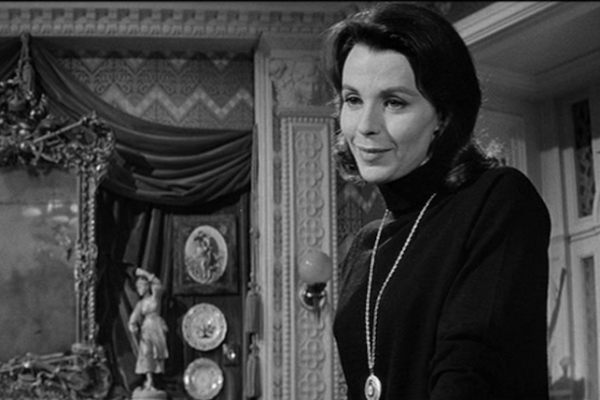
A vintage winner of a movie and rare example of the movie being arguably as good as the book! Based on The Haunting of Hill House from American godmother of horror Shirley Jackson, it features Theo, a badass psychic lesbian in the early 1900s. Hattie wrote a great essay about it!
…she’s smart, has some great lines (and great style — lots of black and even *gasp* trousers) — she beats Luke at cards, which his aunt has already said is an impossibility. She isn’t married, or anything like Eleanor (who is financially dependent on her sister and brother in law) and she seems far more confident and perceptive than the other characters — okay maybe the psychic abilities help. Basically Theo kicks ass and I just thought she was there to balance out Eleanor’s drippyness. In horror we’re so used to seeing women as victims or as evil, but Theo is neither.
The Hunger, 1983
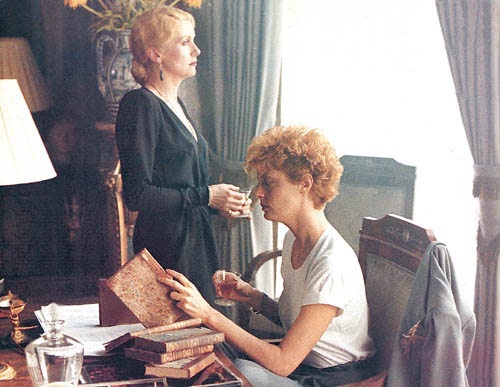
This classic would sound made up if you were just hearing about it for the first time, much like how it now sounds completely surreal to a younger generation that Mel Gibson and Tina Turner once made a post-apocalyptic action film together. Anyways Catherine Deneuve, Susan Sarandon and David Bowie walk into a bar and are all very attractive and lithe vampires at different times in this film, a foundational entry into the Bisexual/Lesbian Vampire Canon as initially put into motion by Carmilla. There are so many iterations on this at this point — Nadja, Vampyros Lesbos, a little webseries-now-film you may have heard of also called Carmilla — but if you’re only going to watch one this would be a good one to go with probably. Before we had Carol, we had Catherine Deneuve as a thousand-year-old Egyptian vampire who wanted to do it with a hot gerontologist.
Modern Vampires, 1999
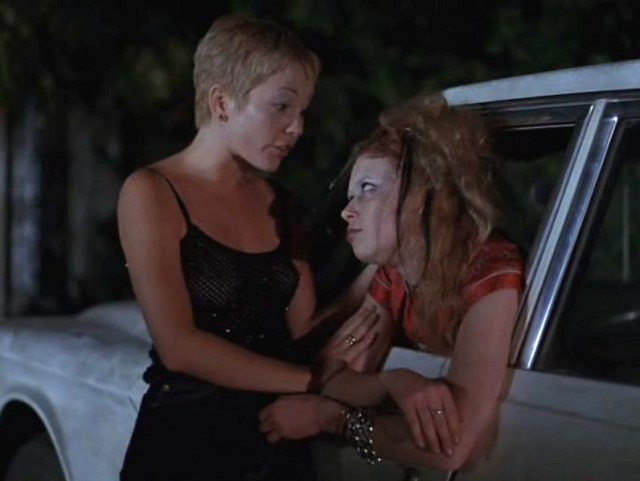
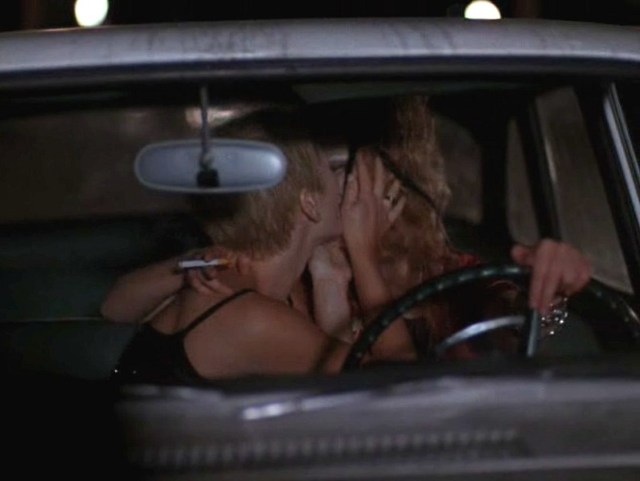
This movie honestly sounds bananas. The actual description from IMDB, with no editorializing on my part, is “A borderline fascistic Dr. Van Helsing unwittingly hires crack smoking gang-bangers to pursue the decadent vampires who secretly control Hollywood and the United States.” It feels safe to say this was born of a very specific time and place and that was 1999, god bless us all. The movie’s tagline invites us to “Taste the Evil…. Taste the Fun!!!!!” and honestly my first thought is that I’ll take a pass! But also Natasha Lyonne plays a bit character who makes out with Natasha Gregson Wagner and gets turned into a vampire later. So you know, this movie is large, contains multitudes, Natasha Lyonne, etc.
Soul Survivors, 2001
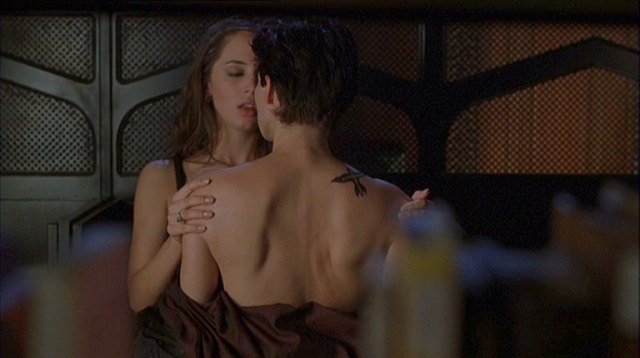
The confusing and mediocre plot of 2001 “psychological thriller” Soul Survivors contains the diamond (???) in the rough of Eliza Dushku having sex with a girl named Raven. Her name being Raven is the most realistic and affirming part of this movie, which also has the extreme misfortune of Casey Affleck in its cast. Check out that raven tattoo though! Do you get it!
She Creature, 2001
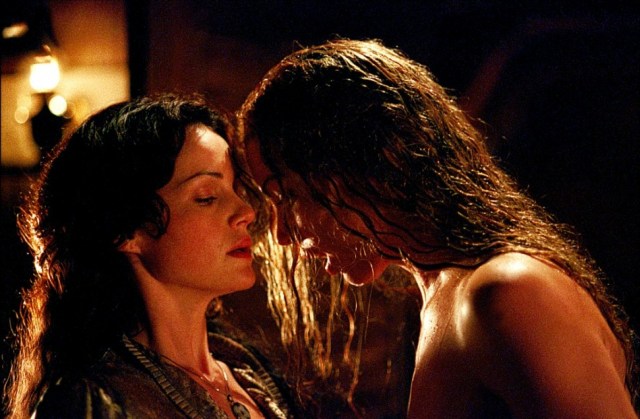
A classic story of woman pretending to be a mermaid for a traveling circus feeling an unexpected attraction to the real live sexy mermaid her husband has kidnapped for their show, and also the mermaid kills and eats people. Although the mermaid they’ve kidnapped keeps eating the people they’re working with, “Lillian also finds herself developing a strange psychological bond with the mermaid, a connection more powerful than her vows to her husband.” Same!
The Sisterhood, 2004
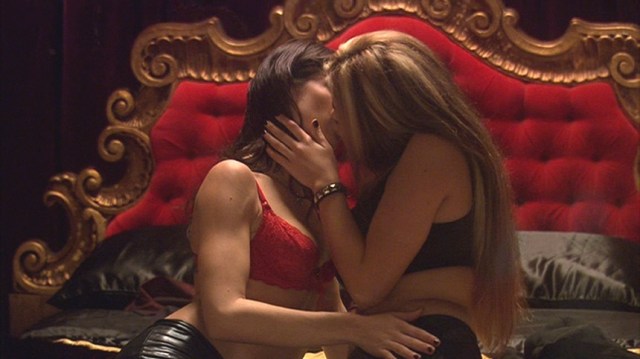
Remember the creepy frat in that one episode of Buffy? What if it was like that but with a sorority and it was kinda gay? This was apparently the thought process of filmmaker David DeCouteau, who followed up his movie “The Brotherhood” with “The Sisterhood,” which concerns a “hot sorority house” with a “sinister secret.” Also on offer are “decadent pleasures.” What more could you ask really! I have not watched this movie and do not plan to — I don’t necessarily recommend that you do either — but if you do please come back here and tell me about it.
Jennifer’s Body, 2009
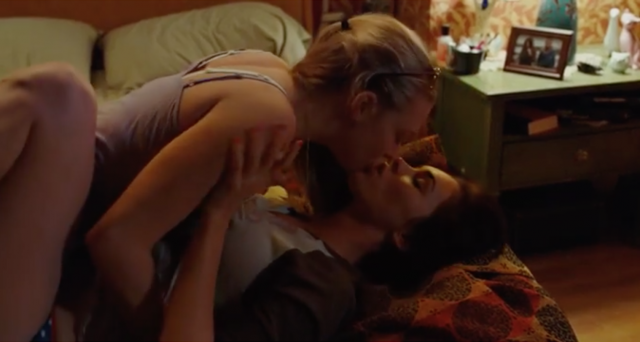
A self-aware misandrist 2000s feminist classic that you’ve definitely seen gifs of on Tumblr. Luckily for you Erin just revisited this! What a delight that one is. Does anyone else find Megan Fox 100x more attractive when she’s covered in blood and homicidal? Cool me neither!
The next day everyone is mourning their fellow students and members of faculty who were killed in the fire. Well, everyone except Jennifer. She’s having a great time. She’s also pretending last night never happened, which while we’re breaking down Jennifer’s first encounter with a rejection of heterosexuality, that’s also what I did the first time I slept with a woman, so.
Survival of the Dead, 2009
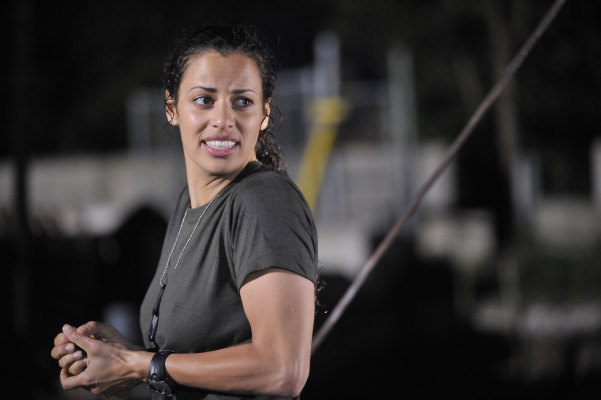
A butch in the National Guard — who is literally named Tomboy? For some reason? — has to navigate a post-apocalyptic zombie wasteland with her comrades. It’s from George Romero, director of groundbreaking zombie films and also this film, which more importantly has a lesbian in it and in that respect is also groundbreaking and of significance as part of his artistic legacy. Her arms also look groundbreaking in this picture amirite?
Satanic Panic, 2009
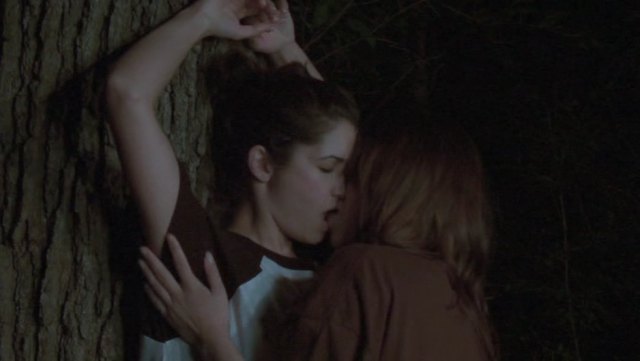
It’s a little surprising there isn’t more queer subtext or regular text in Satanist-themed horror; one could maybe argue that things like Suspiria or House of the Devil have some undertones but if you want to see some girls making out up against a tree you will have to watch the less good Satanic Panic, in which six friends on a canoe trip (???) are waylaid by the satanic cult that one of them was kidnapped by and lost her brother to 25 years earlier. Do people really reunite on canoe trips? I guess we’ll all have to watch to find out.
The Moth Diaries, 2011
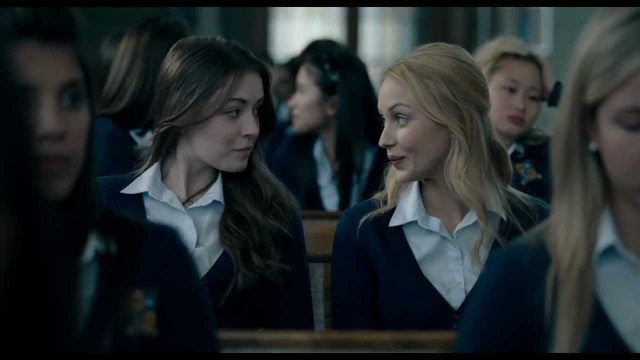
Set in the traditionally gay and creepy atmosphere of a girls’ boarding school, this is a movie about finding out the hot girl stealing all your friends is a vampire and is also trying to pressure you into committing suicide. All I can find in reference to this movie’s gayness are mentions of “latent lesbianism” but Senior Editor Yvonne Marquez has confirmed for me that there are “gay parts” in what seems like a middling-at-best horror movie that is probably still better than Lost and Delirious.
Breaking the Girls, 2012

In 2014 we covered Jamie Babbitt’s horror lesbian psychodrama and I regret to inform you that the takeaway was that it isn’t great. Here is what Kate Severance had to say about it:
It’s hard to get around the fact that the only character who is self-identified as a lesbian is also batshit crazy, and she straight up murders people to win the love of her straight crush. That obviously backfires, since everyone knows that we can’t have nice things, even in fictional depictions of lesbianism where, oh, you know, our narratives don’t have to follow conventional stereotypes. Crazy, right? Breaking the Girls is a thriller, though, so even murderous crazy lesbians have more on their plate than meets the eye. Unfortunately, what’s going on below the surface (of the pool HAHA) isn’t really a rallying call for healthy sexuality either. There’s about a hundred tired stereotypes to keep the plot afloat (in the pool HAHAHA), so if you can stand all the daddy issues and straight couple afraid of queer desire, you’ll still have fun.
Contracted, 2013
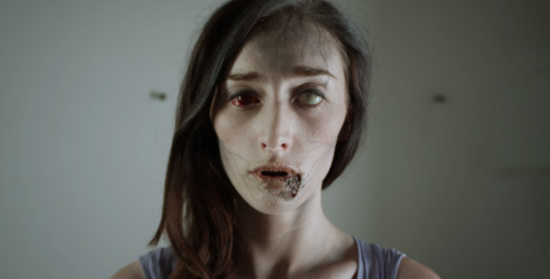
An ambiguously reviewed indie that Kate was not a huge fan of in 2014.
I watched it, and I’m as into horror as the next homo who wore fingerless black gloves in middle school, but hoo boy. A lesbian is assaulted and raped and contracts a disease as a result. That’s a gigantic trigger warning within itself. What follows is some fairly hardcore body horror that will either have you cheering for a return to “real horror” after a year of Insidious sequels and Paranormal Activity wannabes, or turning away from the screen until you turn it off.
The Taking of Deborah Logan, 2014
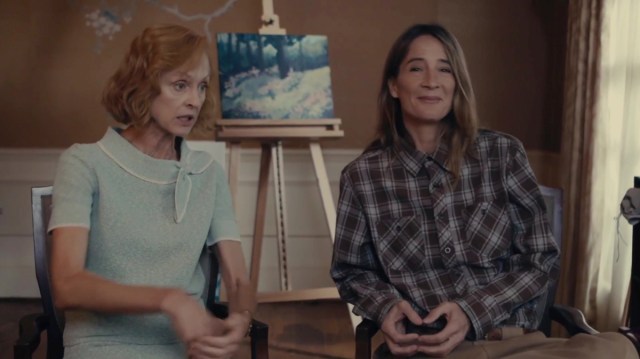
This is so good and so scary and ALSO features one of the more realistic portrayals of a lesbian I have seen in any contemporary movie, let alone a horror film! She’s a country butch with long hair who’s chillingly relatable in that she’s lonely and worried about her aging mother and not over her ex and probably kinda has a drinking problem if she’s being honest with herself and is reliable and sweet. I will indulge in the one spoiler of this post to let you know that you don’t have to watch her die because she doesn’t! Also this movie is legit terrifying just a heads up.
Women Who Kill, 2016

Almost alarmingly of the moment, Women Who Kill features two ex-girlfriends who have not only stayed friends but cohost a podcast about serial killers together. When one starts dating a mysterious new girl, her ex begins to suspect she’s not just endearingly odd but a murderer. Watch this with your ex-girlfriend for seasonal bonus points.
Mother May I Sleep with Danger?, 2016
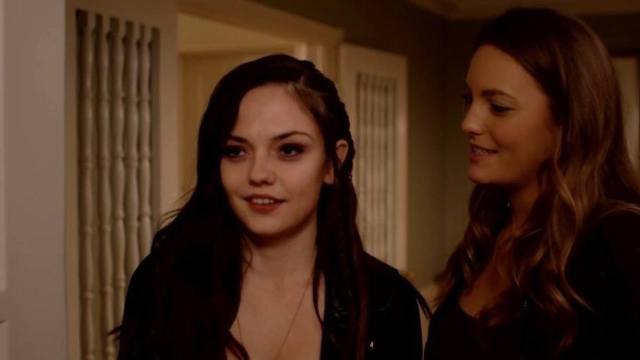
For this I refer you to Stef and Erin’s excellent live-recap-situation of this compelling James Franco-helmed Lifetime original featuring sapphic lesbians and also Tori Spelling.
Why does this movie exist? Who let James Franco do such a thing? Do we as a society deserve this movie? Why was Tori Spelling so OK with playing the mom? These are the questions which vexed my colleague Erin and I as we sat down to enjoy the Citizen Kane of Lifetime original cinema. What follows is a tale of heartache, a tale of lust, a tale of maternal instinct and ultimately a tale of straight cis dudes being the absolute worst.
Before we depart into the night, let us take one moment to consider the newest entrant into this particular genre: Thelma, which comes out November 10th and which I already know I am going to lose my goddamn mind over. Also Yvonne thinks Tragedy Girls looks gay! Do you agree? Discuss amongst yourselves.
I Watched Lesbianish Classic “Jennifer’s Body” and Now I Love Cinema!!!
Welcome to a very special Halloween edition of Watching Lesbian Classics. Typically I go into these movies filled with intense regret – already, for something I’ve yet to experience – but this viewing was different. I’d seen enough stills from Jennifer’s Body to know I was in for a treat. All previous movies were the houses with zero decorations and a single porch light on, while Jennifer’s Body awaited me with generator-powered blow up creatures, dolls coming out of their own graves, and full-ass Snicker bars in a basket with a sign that says, “Take one!”
This film explores some of my favorite themes all in one glossy, campy, self-aware package: misandry, women being extremely gay together, principled revenge, and the triumph of aught culture. My one caveat to this otherwise perfect film is there’s a word that’s said three times, which is three times too many and lands every time like a sandbag being dropped into a baby pool, and Diablo Cody we will all accept Venmo requests if you feel moved to extend them as penance. But enough of the bad, let’s focus on the good: a subtext so purposeful it tops itself.
Join me on this journey of the sexual awakening of two high school friends who endure/inflict necessary acts of violence in order to kill off the last bits of the heteronormative patriarchy that exist inside each of them.
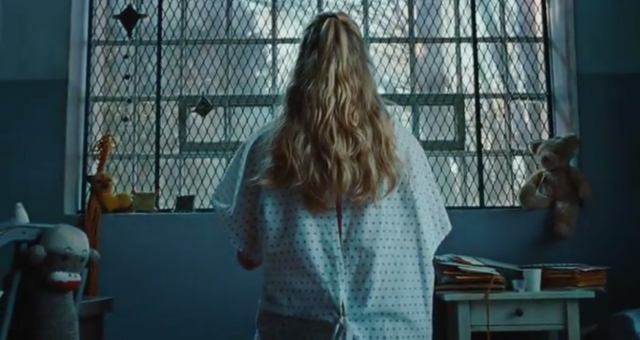
This is the first shot of the movie and imagine me leaning over to you in the movie theater and going, “That’s Jennifer’s body.” Except it’s actually Needy Lesnicki (sure)’s body, narrating her story live from a prison cell. All of the fan mail she receives tells me Needy is famous for… something.
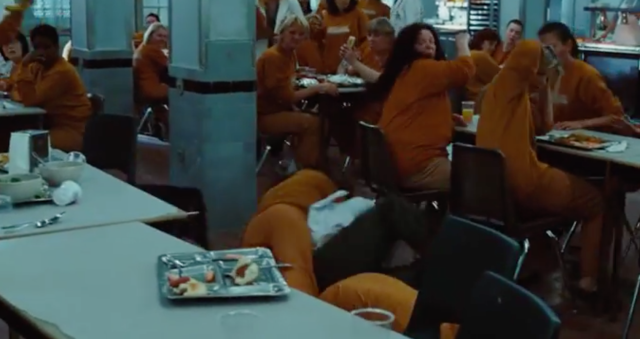
According to the dropkick she lands on a guard that flies the guard across a table and her subsequent shoving of a man into a wall, she’s famous for being my future wife. She used to be normal, she says – well, as normal as any teenage girl being pumped full of hormones can be. Lol true. “But then the killings started happening.”

It all started in a town called Devil’s Kettle, named for the funnels-to-nowhere waterfall that was featured in season 3 of The L Word for the spreading of Dana’s ashes. Rip.
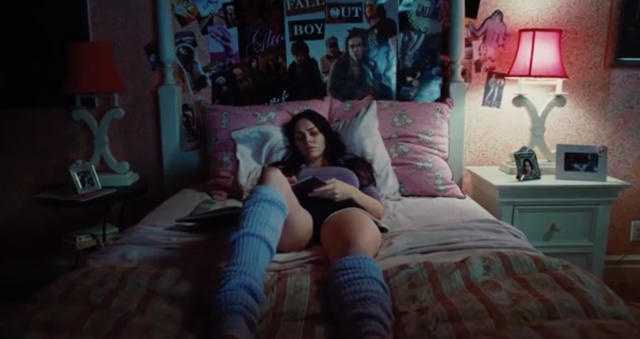
Oh, wait, here’s Jennifer’s actual body, being operated by Megan Fox. Remember that very brief window of time when all anyone thought they had on Megan Fox – an objectively incredible-looking woman, like symmetrically is probably on some fibonacci spiraling, and whose particular aesthetic stirs up a special flavor of Haterade – was that she had “weird thumbs,” whatever that means? Love you guys, and that time.
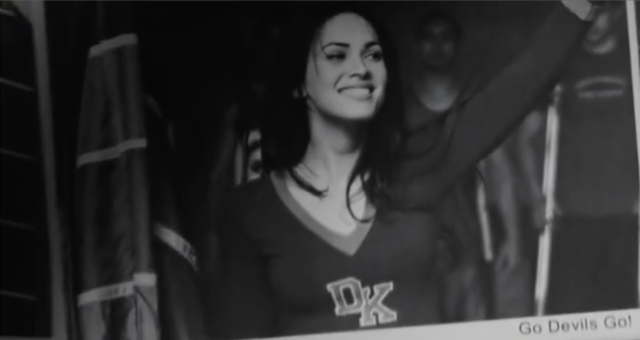

Jennifer’s a cheerleader / Needy’s sitting in the stands / Jennifer gets the top bunk / Needy’s sleepin’ on the floor. We find out that Jennifer and Needy are in a codependent relationship that just so happens to involve Needy’s boyfriend, Chip, who looks like Disney Show Generic Guy Friend Who’s Always The Bridesmaid And Never The Bride.
Someone suggests to Needy that she and Jennifer are “totally lesbi-gay.”
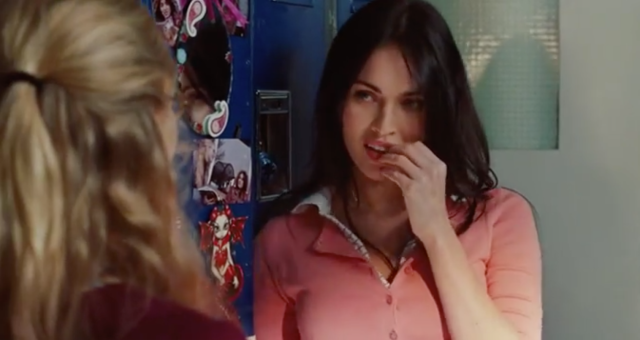
Coming in hot to try and smother that accusation is the very next scene/exchange between Needy and Jennifer, where they engage in the straight woman custom that is aggressive salutations. “Hey Monistat.” “What’s up, Vagisil?” Jennifer invites Needy to a music show that’s later that night and tells her to “wear something cute” while looking at her like she’s a 4pm Totino roll fresh out of the oven.
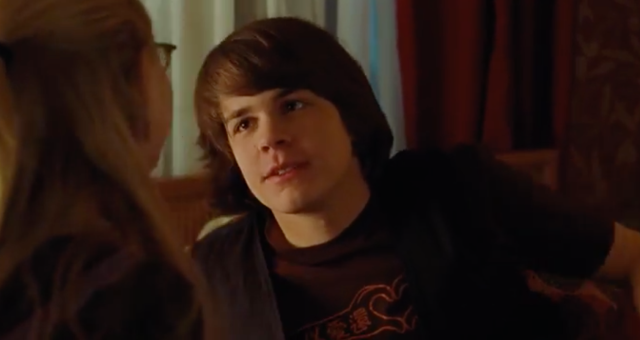
After school, Needy invites Chip over. His hair is the scariest thing I predict happening in this movie. Thankfully, in the middle of their makeout that is making me extremely uncomfortable, Needy turns her head away from Chip to the window in anticipation of Jennifer’s arrival moments before Jennifer even knocks on the door. Unfamiliar with this gift unique to queer women, Chip calls their relationship weird and then the scene ends with Chip pleading with Jennifer to stop stealing his girlfriend.
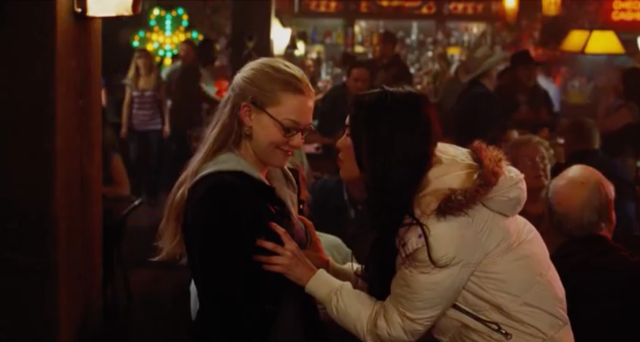
We’re at the bar for the Low Shoulder concert, and right before holding this position for a solid ten seconds, Jennifer passes by a boy who’s trying to hit on her and says a line that I know will not be topped for the rest of the movie and does it with a cadence that can only be ascribed to this string of three words: “WHAT UP, CRAIG.”
Jennifer approaches the band as they prepare for their set and, oh, look, the lead singer is that guy from The OC. Nice. Needy watches on in closeted horror as Jennifer engages her flirt boosters with the ease and flair of Usain Bolt sidestepping toward the finish line.
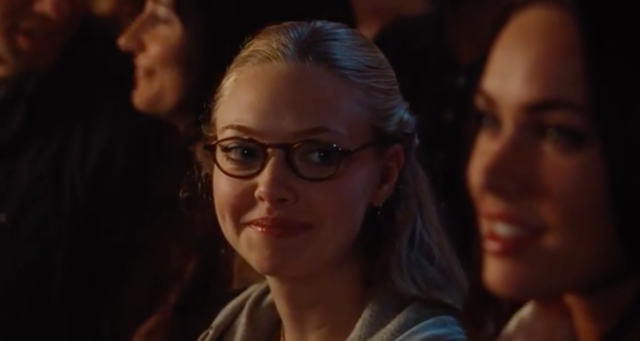
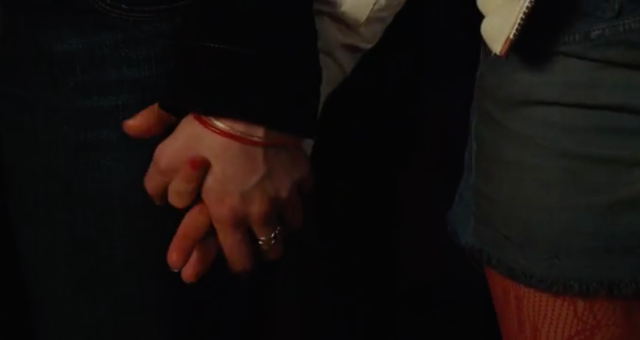
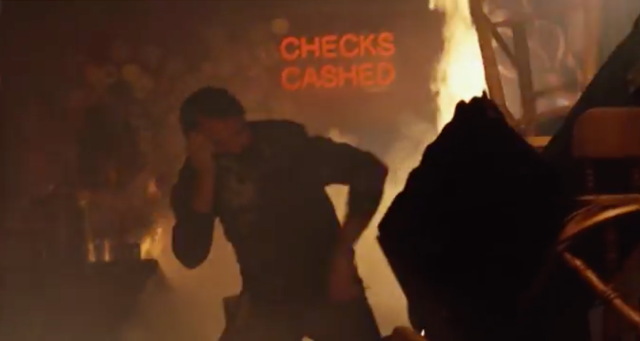
AHH NOW EVERYTHING IS ON FIRE???? Inside this… bar slash payday advance loan store??? The band was playing and now everything is on fire, with no explanation. Jennifer and Needy escape unscathed, but now Jennifer’s being escorted into Low Shoulder’s tour van alone. Perfect. The vibe is about as chill and safe as a cis white straight dude making this face right after he’s closed your friend inside his van can be!
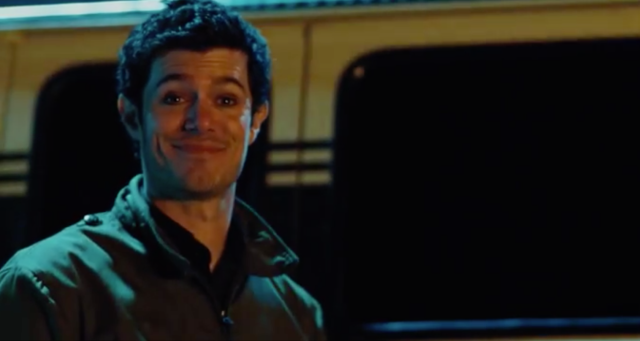
When Needy gets home she calls Chip to tell him what’s happened. She keeps him on the phone while she walks around her empty, dark house looking for the source of the noises she keeps hearing. In this way I believe she is exploring the crumbling institution of heterosexuality, the noises her unrealized desires.
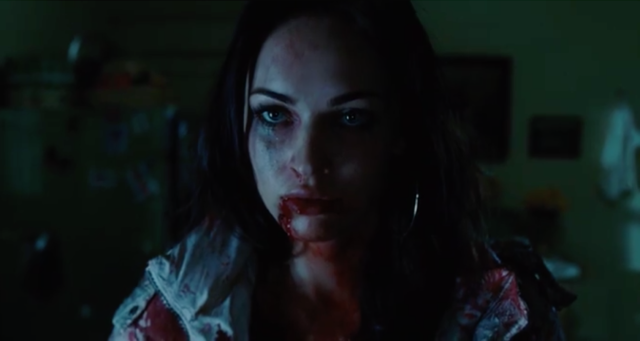
Speaking of unrealized desires, Needy turns from the sink in the kitchen to find a bloodied and silent Jennifer standing in the middle of the room. Without a word, Jennifer turns to the fridge, tears open the door, and rips into a full chicken. Needy tries to stop Jennifer by saying, “My mom got that from Boston Market.” Ahahaha. Is this my favorite movie?
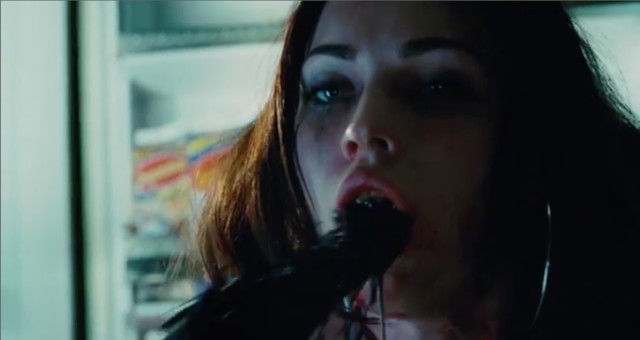
Jennifer stops eating only to purge a thick, black substance (the toxic effects of the patriarchy). Then Jennifer shoves Needy against a wall in the hallway and asks her if she’s scared. Needy says she is scared, but forgets to say out loud, “…of loving you.”
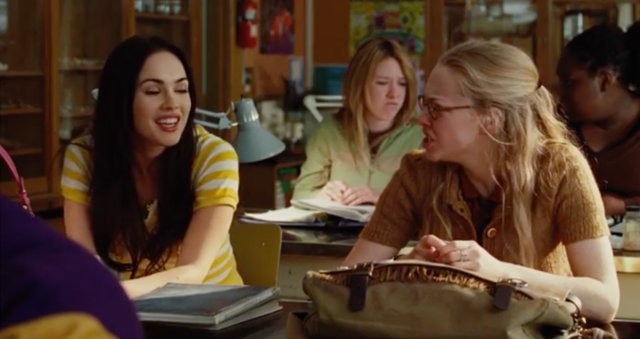
The next day everyone is mourning their fellow students and members of faculty who were killed in the fire. Well, everyone except Jennifer. She’s having a great time. She’s also pretending last night never happened, which while we’re breaking down Jennifer’s first encounter with a rejection of heterosexuality, that’s also what I did the first time I slept with a woman, so.
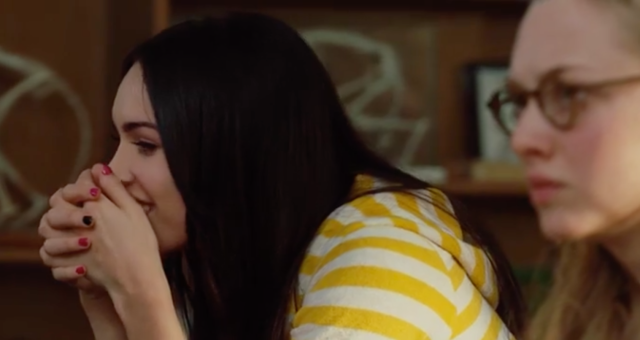
What do you think she’s flagging here.

Jennifer is now on the prowl. She finds a friend of Craig (who died) crying in a field and lures him into the forest with a promise of sex. Then she kills and eats him. Oh. Oh, yes. I see where this is going. I don’t know what to tell you, I’m enjoying myself!

Heyo, Amy Sedaris as Needy’s mom lookin’ like we all feel in 2017!
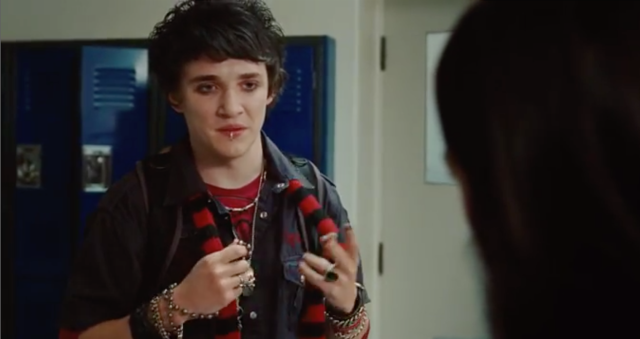
One day after class, Jennifer and Needy run into Colin, AKA My Chemical Romance’s ambassador to the people. Colin nervously asks Jennifer out and she declines. It’s only when Needy expresses interest in Colin that Jennifer changes her mind and decides to take Colin up his offer. Ah yes, the old queer standby of fucking through osmosis.
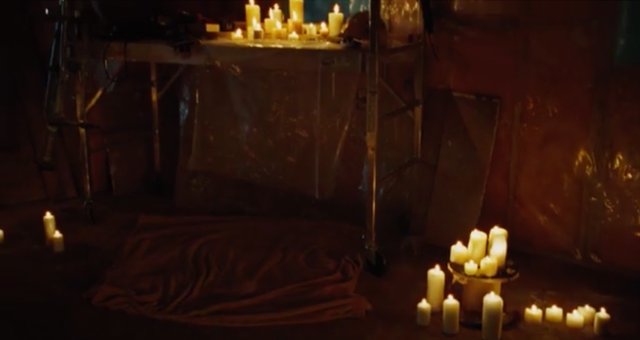
Jennifer invites Colin to an abandoned house for their date. Inside there are candles lit and Akon playing on the boombox so y’all already know what TF is going on. Intercutting this scene is one where Needy is having sex with the vaguest, most “who is she?” embodiment of a hairstyle the world has ever known.
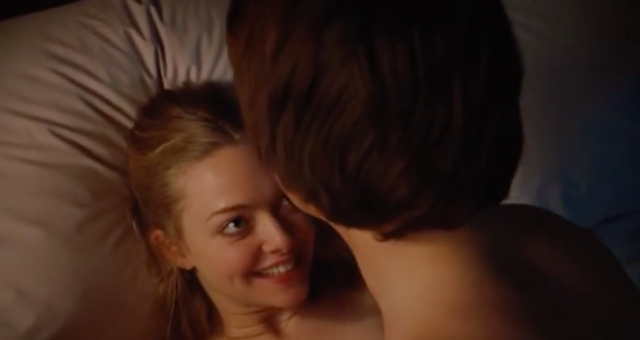
A moment of silence for this haircut that still sits under ball caps as we speak.
In the middle of having sex with Chip for the first time, Needy is hallucinating that blood is dripping from the ceiling. Seems like a normal reaction from someone who’s super into the person with whom they’re having sex. Then Needy hallucinates a dead Craig and a bloodthirsty Jennifer at the edge of the bed, just casually thinking about Jennifer in her most primal state while she’s having sex with Chip.

Back at the house, Jennifer eats of Colin’s body and drinks of his blood. In the name of the father, son, and holy spirit, amen.

Later that night, mere hours after experiencing a male scream-inspired rush that ended with Jennifer crouched and bloodied on Needy’s car like a hungry gargoyle come to life, Jennifer shows up in Needy’s bedroom looking ready for a slumber party. Without any discussion of earlier events, Jennifer crawls toward Needy at the foot of her bed.
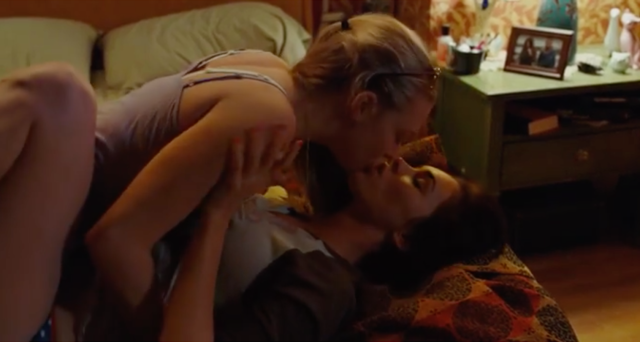
Needy assumes top status immediately and effortlessly. Right as they’re finding their groove, Needy draws back and demands to know what’s going on. Didn’t I just witness you on top of the car I was driving? Jennifer’s like, look, it’s fine, it’s that classic story of being taken in a van to be sacrificed in the forest under the waxing moon so a shitty band can become more successful under Satan’s eye.
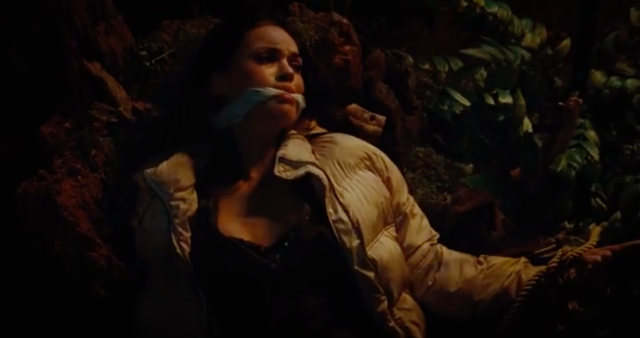
We’re being brought back to this night in a flashback, and it is really saying something that upon seeing a group of men take a woman into a forest I feel relief that what ends up happening is just a sacrificial killing!!! As the lead singer reads an incantation he got off the internet while holding a knife over Jennifer’s bound body, Jennifer says, “Why don’t you get a publicist? We can make t-shirts. I can be – I can be a part of your street team!” between tears, and, look, I know Megan Fox didn’t write that but her delivery makes me know she feels this in her bones and WOW I LOVE MEGAN FOX!!!!
The sacrificial killing didn’t actually kill Jennifer; instead, she became an indestructible misandrist. Same. Needy’s still freaked out and tells Jennifer to leave, which Jennifer eventually does through an open window, but not before suggesting they play “boyfriend-girlfriend” like they used to.
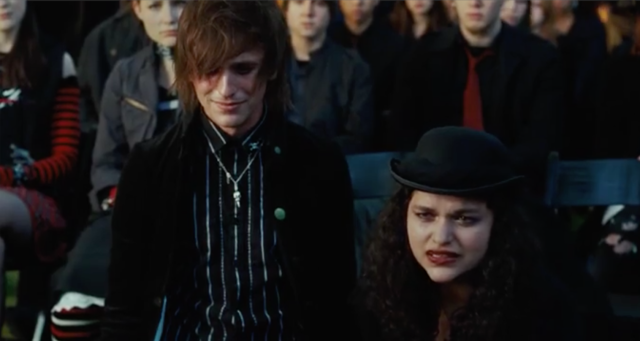
We’re at Colin’s funeral. His emo friends try to bright-side the situation and say he would like that he’s now in the “unearthly realm.” When Colin’s mom hears this, she unleashes the most sobering eulogy I think I’ve ever heard, in real life or in film, wherein she explains that Colin isn’t in any unearthly realm, he is simply six feet in the ground, as we all soon will be.

After Needy finishes her research on how to kill a demon, she’s approached by the Quizno’s hair doll mascot to talk about going to the formal dance together and making their Cheesecake Factory reservations. Needy uses the best excuse in the world to not have to be around him anymore, which is: “It’s not safe for us to be together.”

Hey, it’s Chip’s mom, the adoption lady from The L Word! Up to two The L Word references can I get a hell yeah.
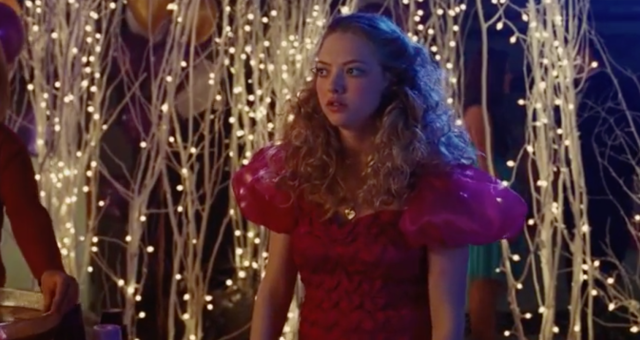
We’re at the dance and even though I don’t think there’s a theme Needy comes styled like this? Chip is on his way to the dance when he’s stopped by Jennifer in the park. In the middle of Jennifer attempting to sabotage Needy and Chip’s relationship by telling Chip that Needy and Colin were sleeping together, Low Shoulder is being introduced at the dance. They’re playing for free even though they have sold out shows around the country!!!
Jennifer, her eyes set on Needy, takes one for the team.
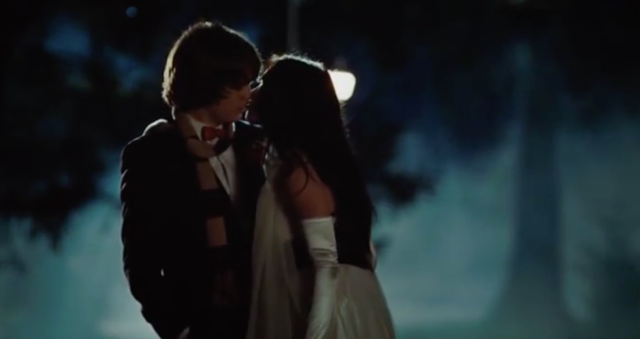
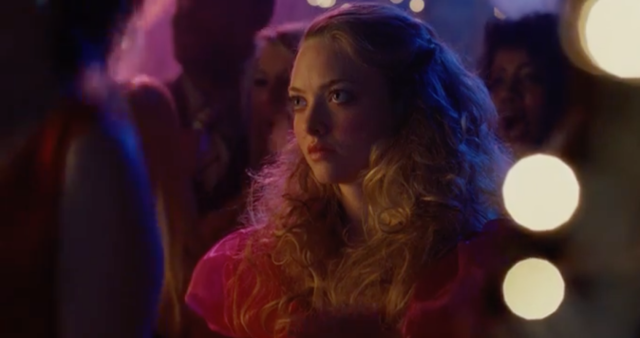
This would also be me if Low Shoulder was playing at a dance.
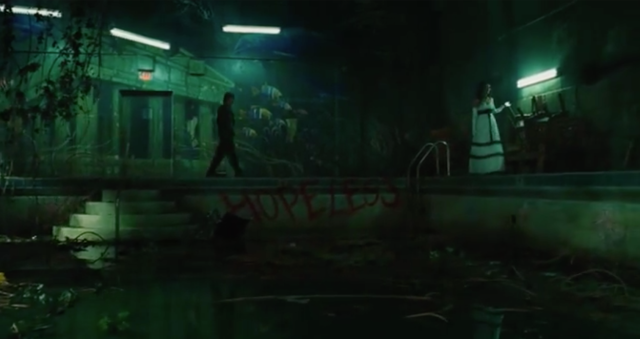
Jennifer takes Colin to the Hopeless Trash Pool for feeding time. When he refuses her advances, she throws him in the pool, which is certainly one way to do it. Needy, her queer radar finely tuned, shows up and interrupts Jennifer doing this:
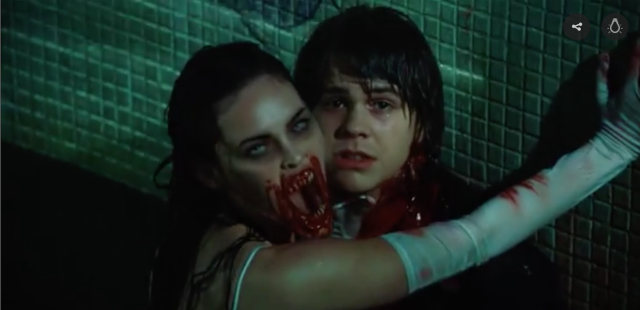
Needy jumps into the pool to try and save Chip even though he clearly had no problem going somewhere with her best friend the second he thought she might have cheated on him. Needy is only directing her anger at Jennifer, not Chip, because the patriarchy needs women pitted against each other in order to thrive. It’s in this moment that Jennifer purges black slug for the second time. Repent!
Needy’s not that impressed with Jennifer’s ability to levitate above the pool, to which Jennifer responds, “Do you have to undermine everything I do? You’re such a player hater.” Lol! Then, when Jennifer says she’s going to kill Needy and Needy responds by saying she thought Jennifer only killed boys, Jennifer says, “I go both ways.” With that confession, Chip dies.
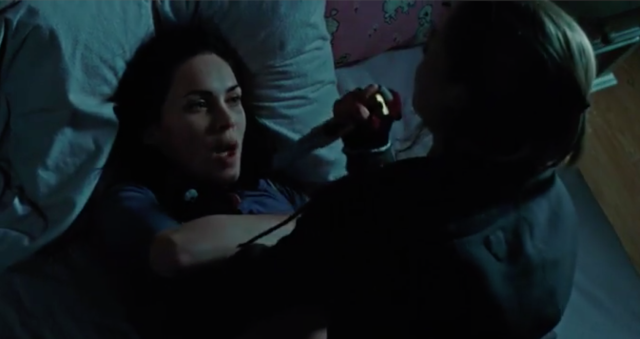
Now Needy’s on the prowl, because you can’t just turn a girl out like that and not expect some blowback. Jennifer’s in her room getting ready for bed when Needy casually barrel rolls through the window. A fight ensues, and when Needy pulls out a box cutter, Jennifer says, “Do you buy all your murder weapons at Home Depot? God, you’re butch.” This is the greatest movie of all time.
Mid struggle, Needy tears off Jennifer’s BFF necklace (their guise of friendship) and is then able to pierce Jennifer’s heart. With this, Jennifer dies, and with that, an accurate portrayal of the queer intensity that eventually kills one or both parties condensed into a single moment.
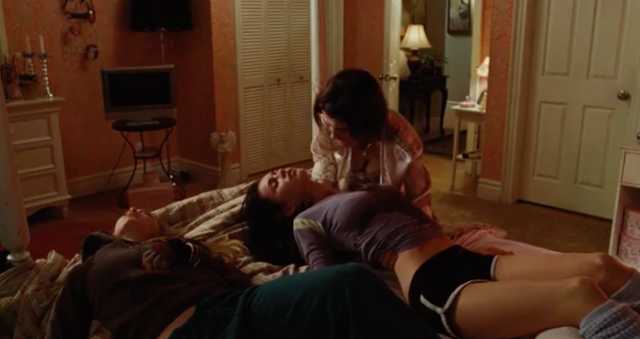
Jennifer’s mom finds them both bloody in bed, which brings up back to why Needy’s in jail. Needy Lesnicki doesn’t know who she is anymore. She feels… different. Also, because Needy’s been bitten by Jennifer means she’s absorbed new powers, like superhuman strength, being able to levitate, and being able to spot other people who’ve been bitten in any public setting.
One night in jail, but for whatever reason not the very first night in jail, Needy levitates to the top of her holding cell, kicks out the barred window, and escapes through a fence.
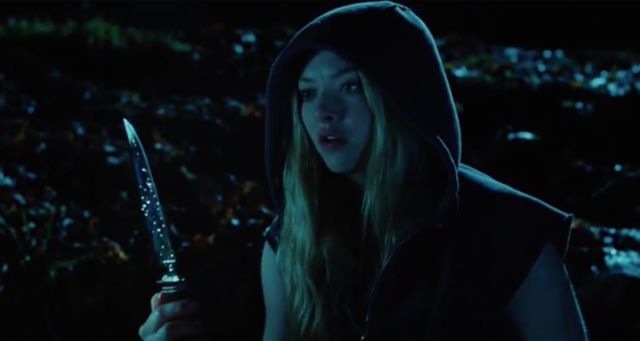
On her walk through the woods, Needy finds the knife that was used to sacrifice Jennifer. As someone who has just escaped prison and needs to lay low, she of course takes it with her as it is clearly easily concealable. She hitches a ride and tells the driver she’s going to see a band. When he posits that it “must be some band” to be making such a long trip, she tells him it’s their “last show.”
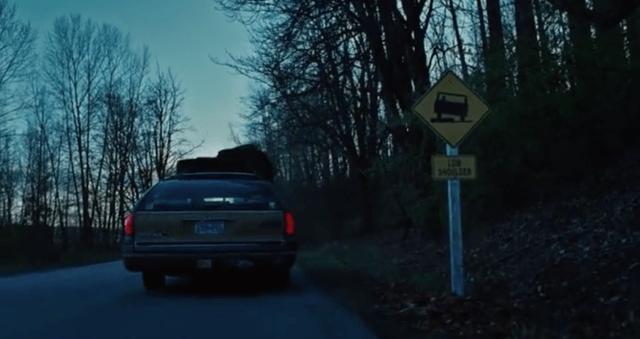
sign
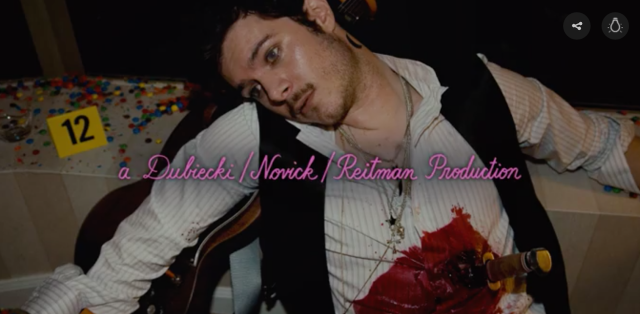
Happy holidays, everybody.
Rhymes With Witches: Scream Queens
Halloween is almost here which to me means one thing: overanalyzing horror flicks for any feminist undertones! YAY!!!! Creative writing/Women’s studies major’s work is never done and for this graduate, no season has better metaphors for misogynistic fears and powerful female sexuality than the scary movies that permeate almost every channel and film festival throughout October.
I mean seriously, is there anything scarier or gorier than being a woman? Horror films are a perfect and entertaining vessel to showcase not just our own fears but about other people’s fears towards us as women. Horror films run the gamut of fears we experience as women. Everything from childbirth, abusive relationships, roommates and demon possession (duh). I could go on for hours about all the different subgenres in scary flicks and their feminist or non-feminist message and I have to admit that my favorite subgenre at the moment is the Blossoming-Teenage-Girl-Becoming-A-Woman and all the scary mumbo jumbo that comes along with that.
Drenched in metaphors about loss of innocence and blooming sexuality, the psychological warfare of high school along with all the blood and guts that comes with it, it becomes clear just how perfect our puberty years are a perfect fit for the horror film genre. If we took all of the fear, anger, confusion, exhilaration we felt as teens and molded that into a movie, it would be a horror flick. So in honor of this holiest of scary holidays, I have compiled a few of my all-time favorite scary chick flicks: ranging from horror classics to ridiculous fun. Whether a hardcore scary movie fan or just looking for something fun to play at a party, hope this list helps.
Carrie (1976)
Carrie is like the Titanic of scary movies. Everyone knows what happens at the climax yet it’s still a mandatory installment in any (good) Must Watch list. The now iconic image of a young, fresh-faced Sissy Spacek covered in pig’s blood is so ingrained in our pop culture I think we’d be hard pressed to find anyone who doesn’t know who Carrie (or at least what happens to her) is. The movie follows Carrie, a shy teen outcast who is in constant torment from fellow students and from her own religious nut job mother. But Carrie soon discovers she has telekinetic powers and goodness knows she’s not just gonna use it to get snacks from the fridge without moving from the couch (which is what I would do).
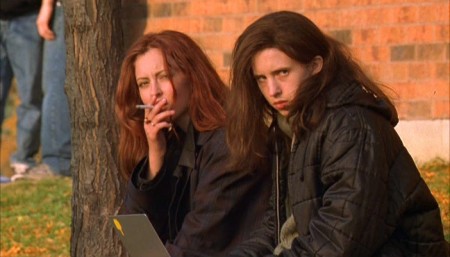
Gingersnaps (2000)
Talk about heavy handed, you can cut the metaphors and symbolism in this movie with a butter knife. The film surrounds sisters Brigitte and Ginger, two social outcasts who like to spend their time recreating gory death scenes like some kind of twisted lookbook. But a rift starts growing between them when Ginger starts her period/gets bitten by a werewolf. Will their sisterly bond be able to survive all of Ginger’s body ch-ch-changes.
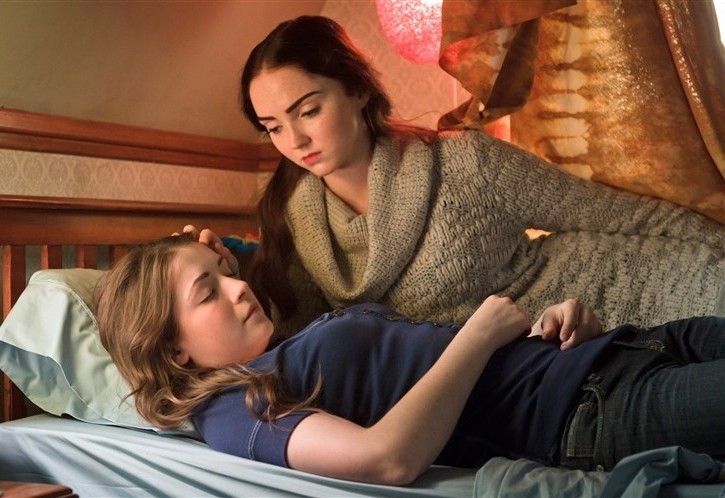
The Moth Diaries (2011)
All girls boarding school? Check. Plaid skirts? Check. Lesbian vampire played by world renown supermodel Lily Cole? CHECK. Our main character, Rebecca and Lucie are inseperable and are all set to have an awesome new school year. That is, until a mysterious new girl, Ernessa arrives and starts to get really close to Lucie (like real close). Is Ernessa really a monster or is Rebecca’s strong jealousy messing with her sense of reality? It’s probably pretty cheesy but because of the above checklist, it’s now a Halloween staple.
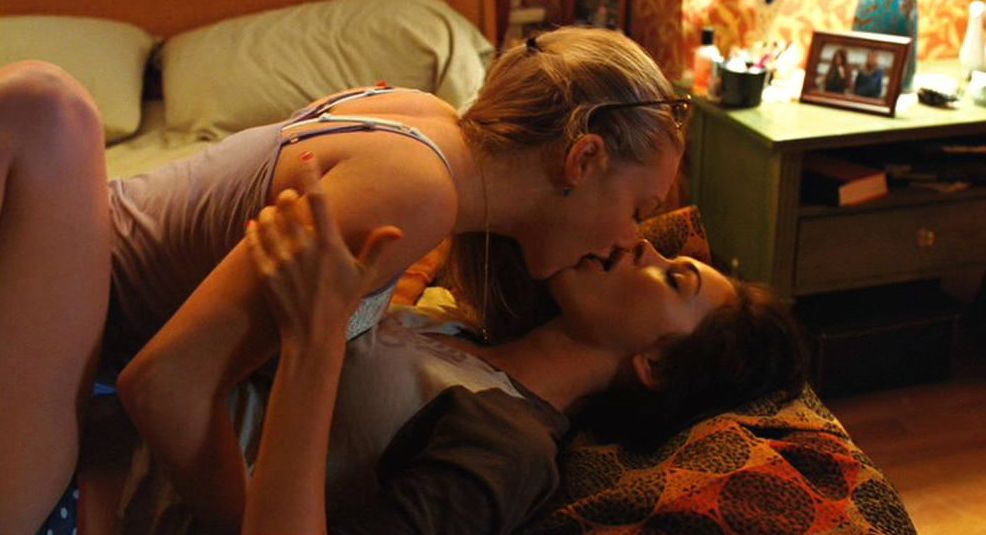
Jennifer’s Body (2009)
A seriously underrated movie about a demon possessed cheerleader (played by Megan Fox) who eats boys. #Rolemodel status much? So the story is a little clunky, but if you ever wanted to see Amanda Seyfried kiss Megan Fox and kill Adam Brody, then this is the flick for you.
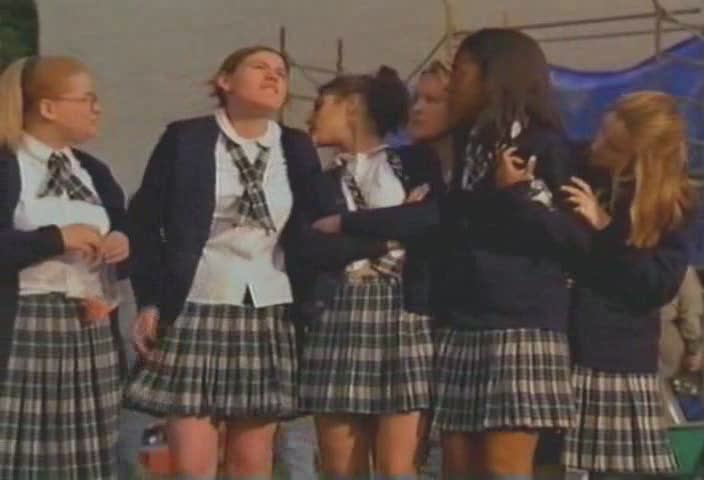
Little Witches (1996)
Yet another movie set in an all girl’s boarding school (this time a catholic school), but while The Moth Diaries at least tries to be a high brow scary movie, this has no qualms just being god awful and I love it. But most importantly, this is Clea Duvall‘s first movie and one where she has a naked scene so obviously this is my favorite movie of all time. (Yes it’s on Netflix, why are you still reading this for?)
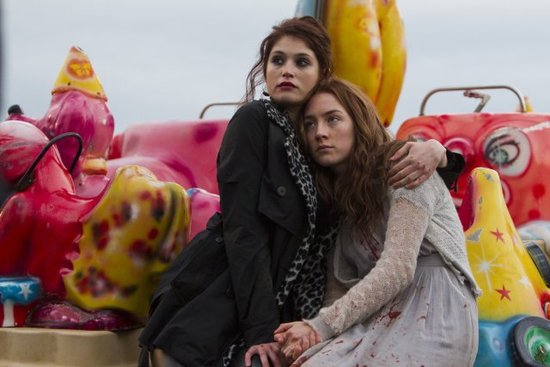
Byzantium (2012)
I like to think of this as the feminist Interview With a Vampire or/and the vampire version of Ginger Snaps. Eleanor (Saoirse Ronan) and Clara (Gemma Arterton) are sisters hiding in a decrepit coastal town trying to hide out from an ancient league of vampires who believe only men should have the power to have and grant immortality. Kick ass girl power scenes ensue!
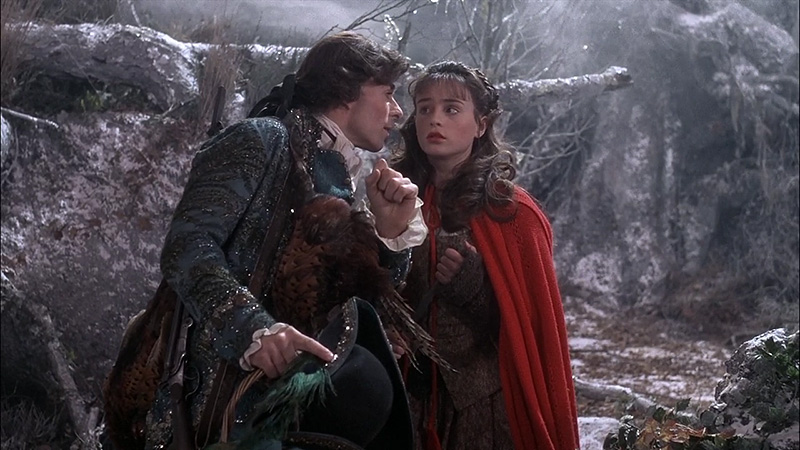
The Company of Wolves (1984)
Based on the werewolf stories from Angela Carter’s short story collection The Bloody Chamber, this is any nerdy girls’ wet dream. Here Carter, who also wrote the screenplay, creates a beautiful film that looks like a poem brought to life. Though there are several stories interspersed throughout the movie, in the center is the story of Rosalee, the Little Red Riding Hood figure who must find common ground between living in an oppressive society and her burgening sexuality. With Angela Lansbury as Rosalee’s grandmother, this is not one to miss.
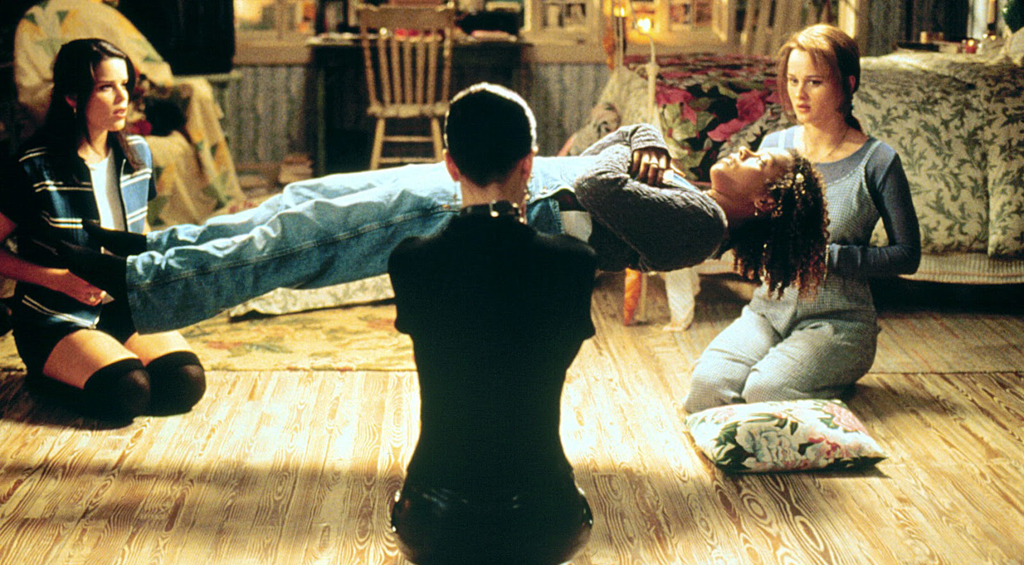
The Craft (1996)
The quintessential ’90s film that made witchcraft look so cool we all ran out to the local library to read Teen Witch and wear “goth-y” floral dresses. Also I want to personally like to thank the script writer who knew exactly what teenage girls would do if they had magical powers; and yeah I’m taking about the hair color changing scene. That’s pretty much my femme fantasies come to life. This movie focuses on a group of misfit girls who harness the power of “Manol” and start raising a little hell. The awesome powers aside it’s fascinating to watch the power dynamics among a group of friends and how easily they can turn on each other when that power is threatened in anyway.
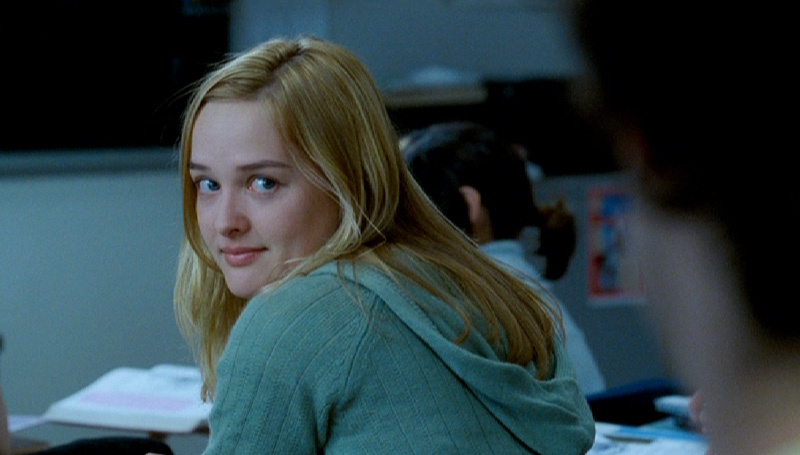
Teeth (2007)
Come one! Obviously I’m going to mention this film. In case you are one of the few humans who consently chooses to live under a rock but just started to get wi-fi, Teeth is about Dawn, a teenage spokesperson for a Christian abstinence group who discovers that her vagina not only has dentures, but has a pretty strong bite to it too. I ain’t gonna give anything else away, but I trust you will love, just as I did, watching this character grow from a someone who fears her lady bits to wielding them like a weapon.
I admit I don’t think this list is perfect or fully encompasses the wide array of teenage girlhood. Where are all the WOC and queer women in horror films? And I’m not talking about those horrible voodoo priestess or animal demon stereotypes. If there are any horror films out there with awesome female characters that I missed (even if they don’t fit the “blossoming teen” genre, I wanna know anyways! From one scary movie fan to another.
